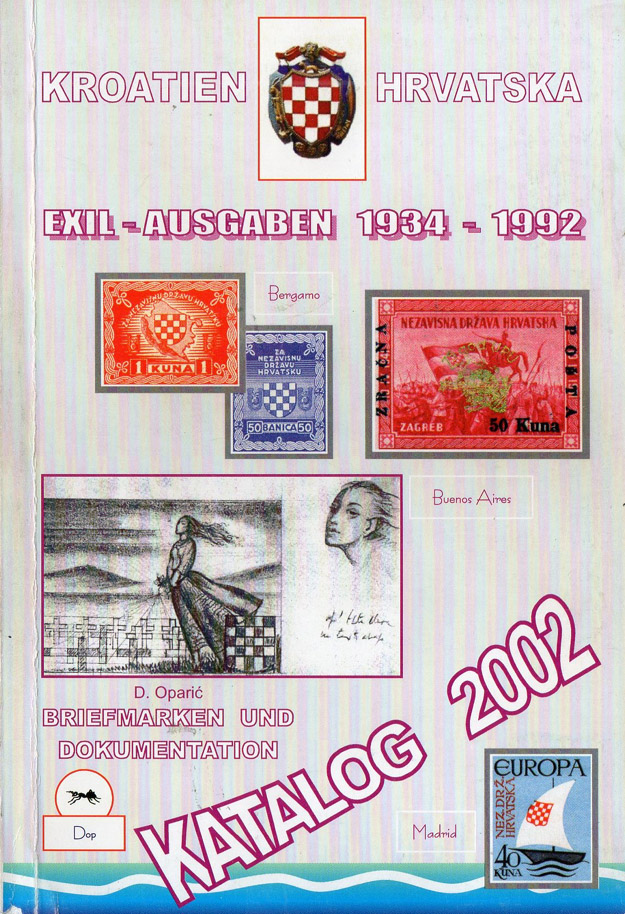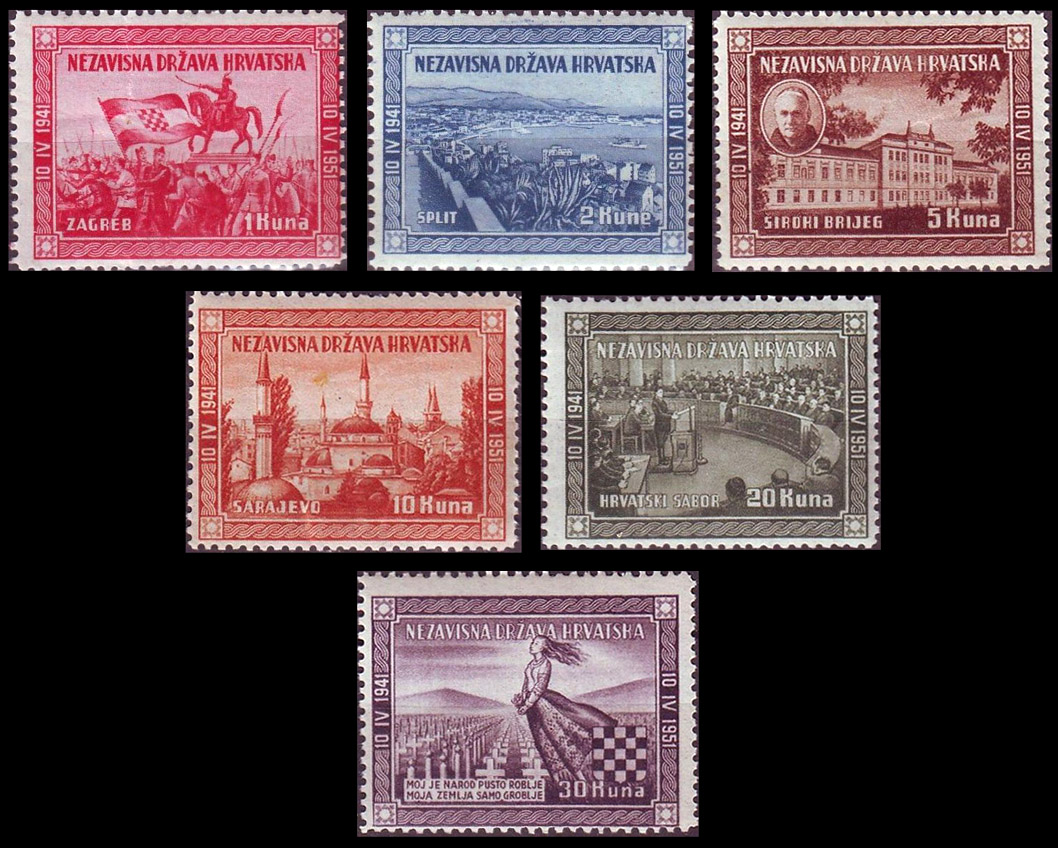
[Below: Circa 1951 - odd perforation]
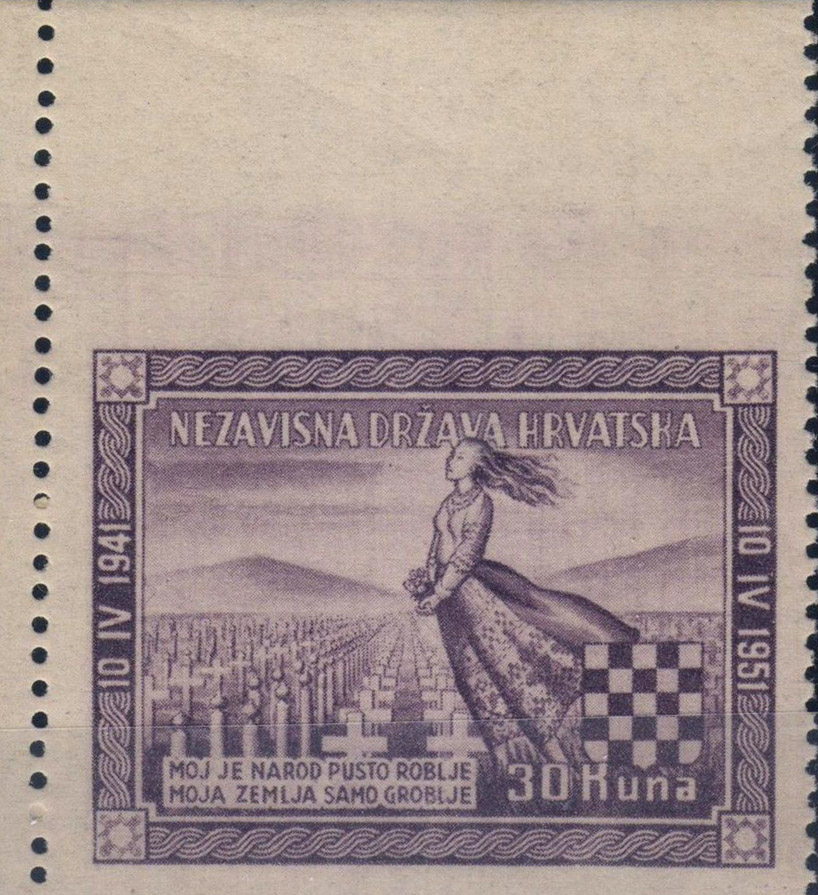
[Below: Block of four, imperforate]
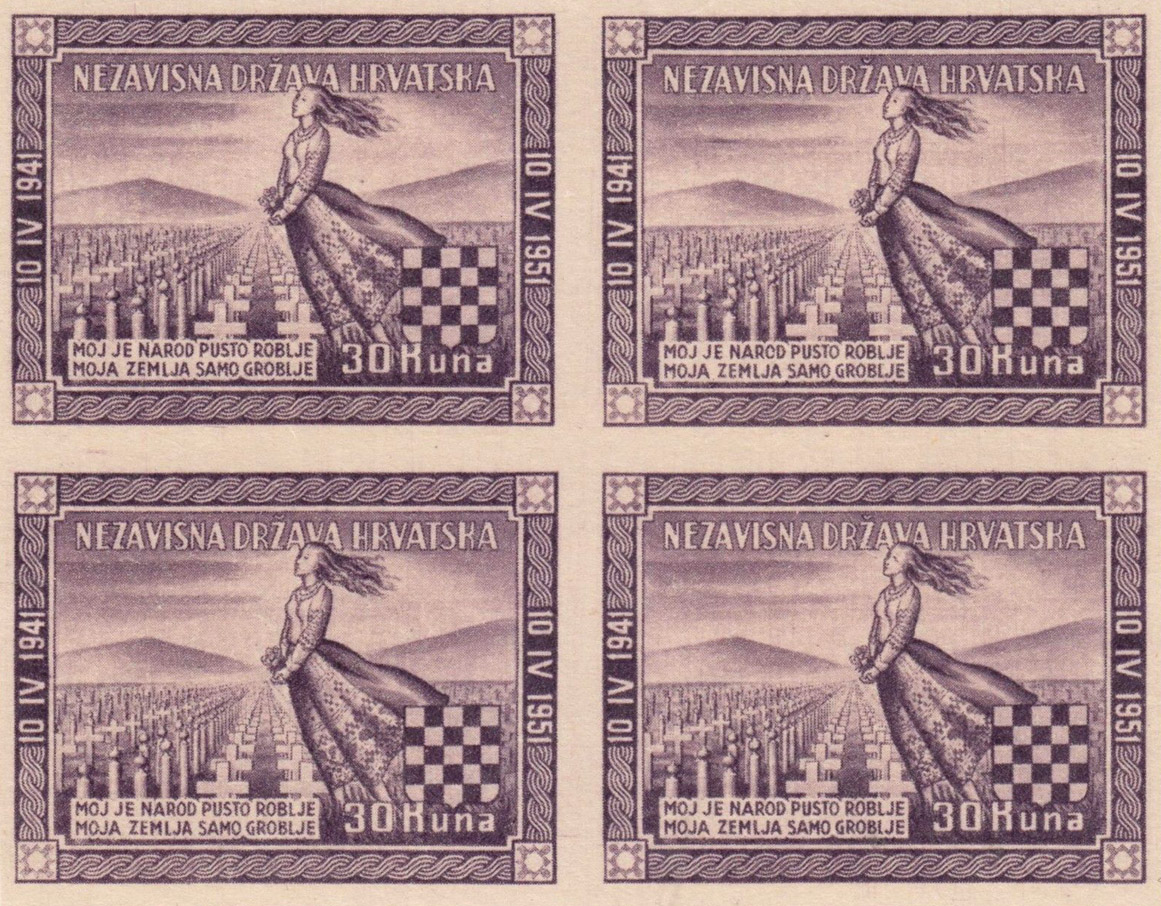
[Below: Proof]
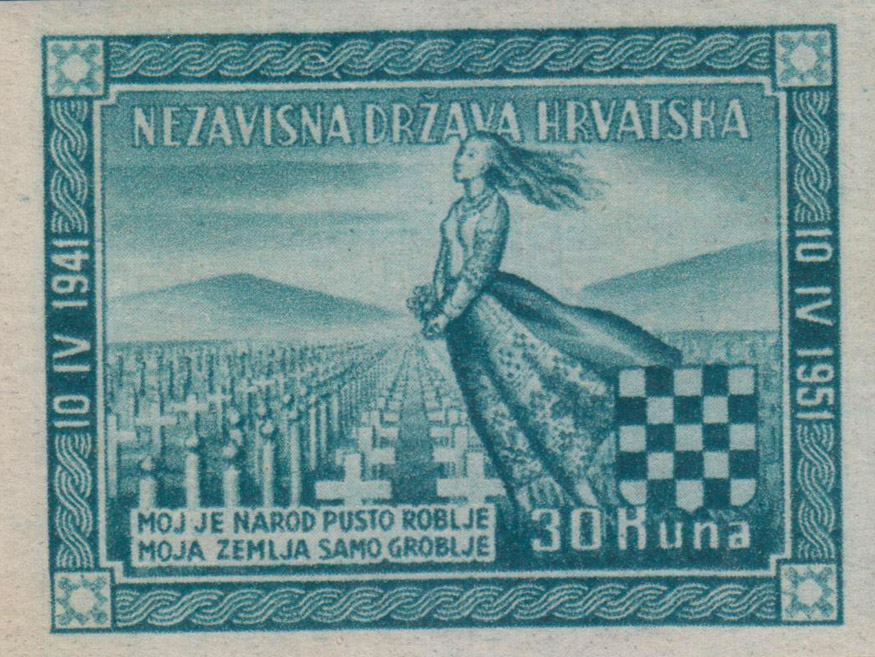
[Below: Used example - circa 1953]
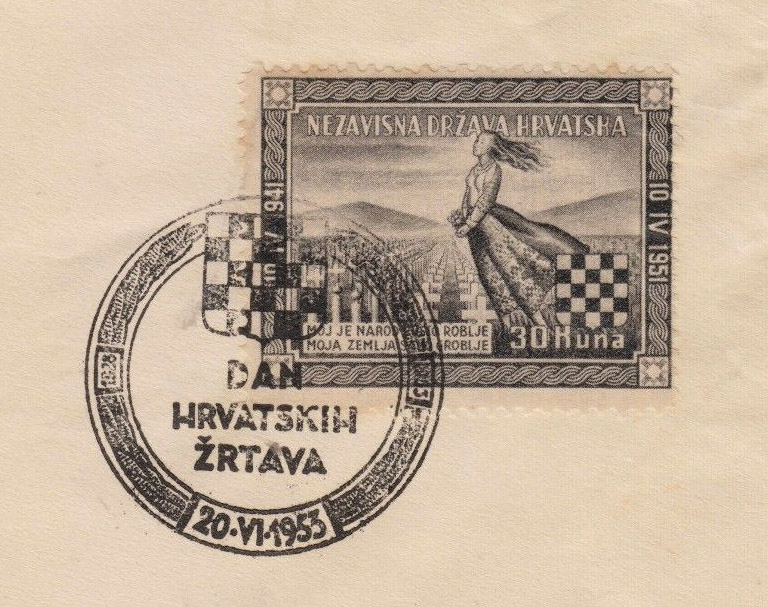
[Below: Original sketch materials]
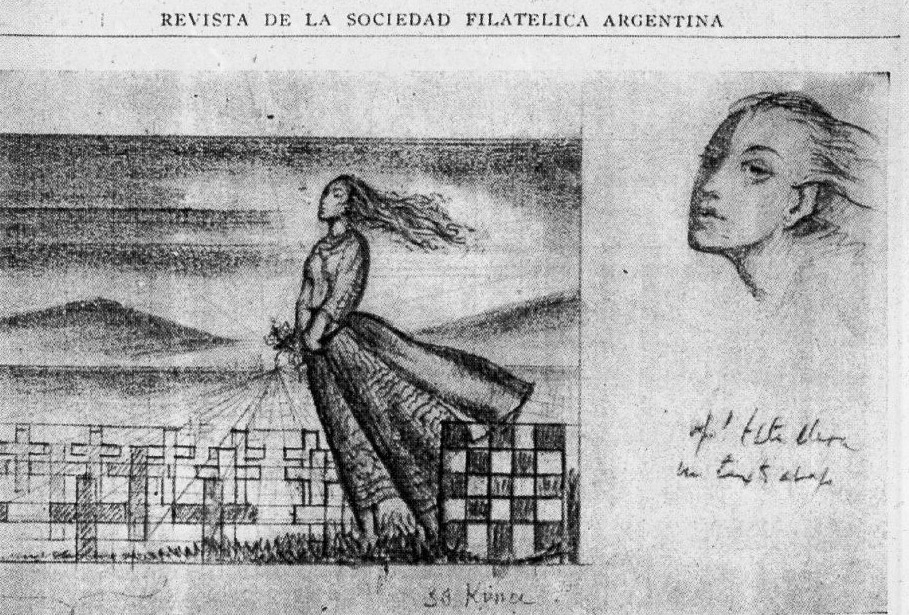
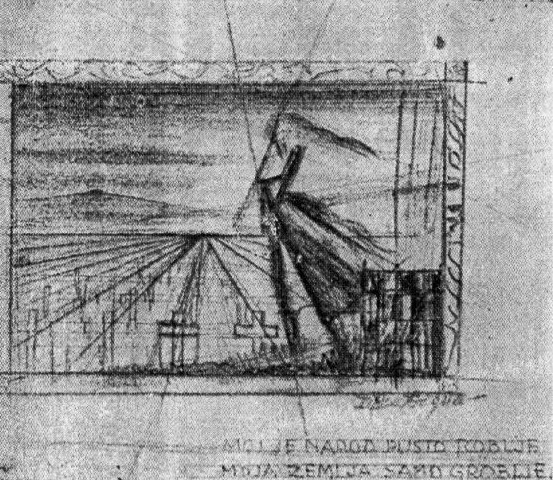
[Below: Overprinted, only 1000 issued, circa 1952]
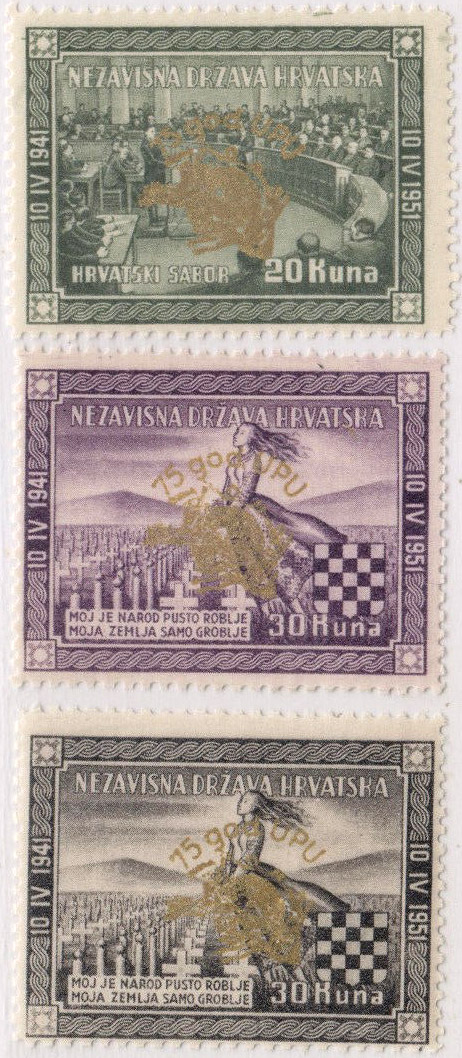
[Below: Overprinted, only 1000 issued, circa 1952]
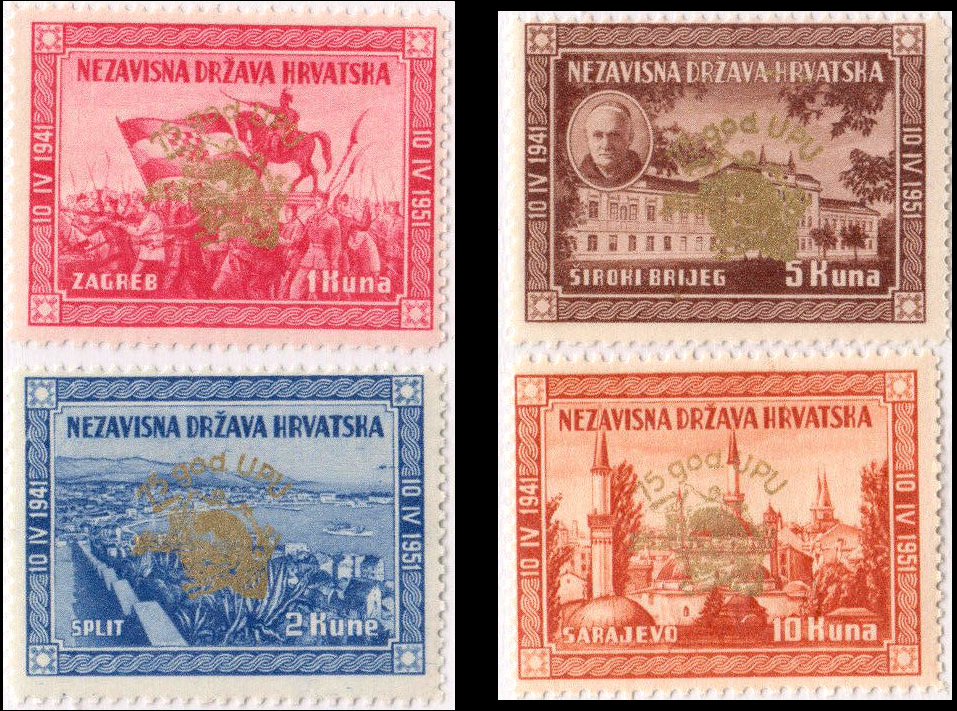
[Below: Close-up of overprint]
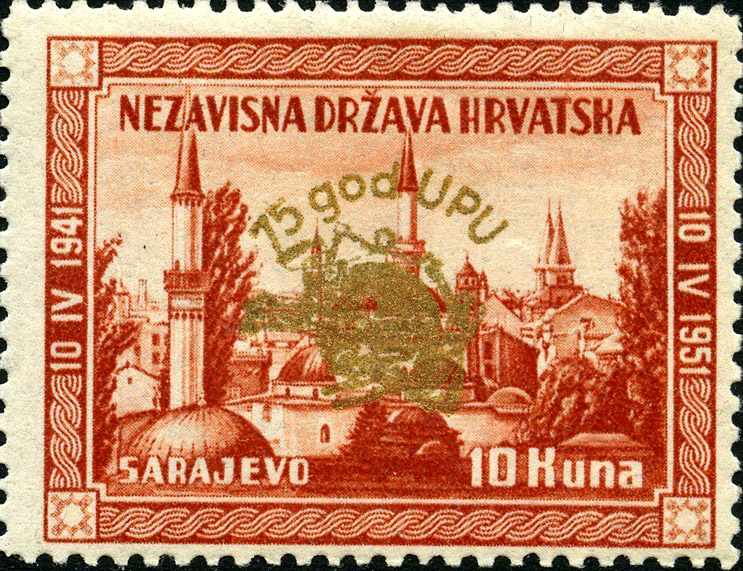
[Below: Block of four]

[Below: With additional overprint - circa 1952]
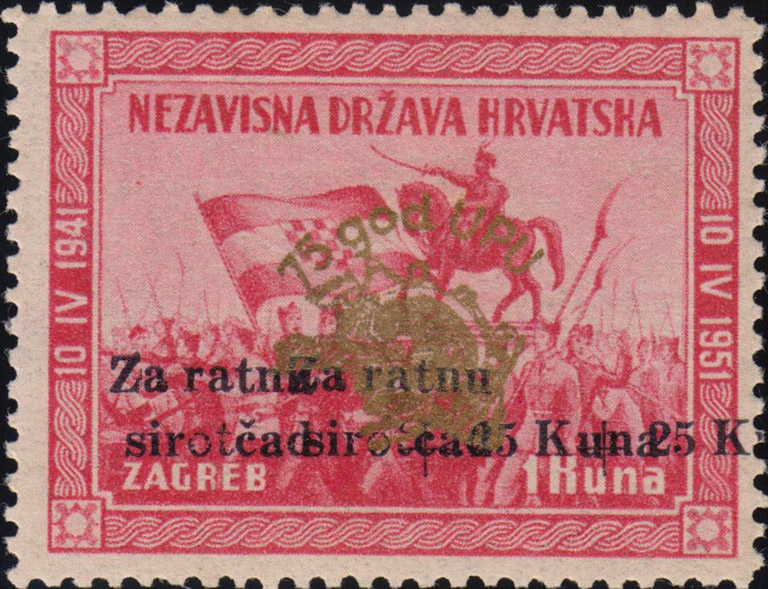
[Below: Rare sheet with overprint - circa 1953]
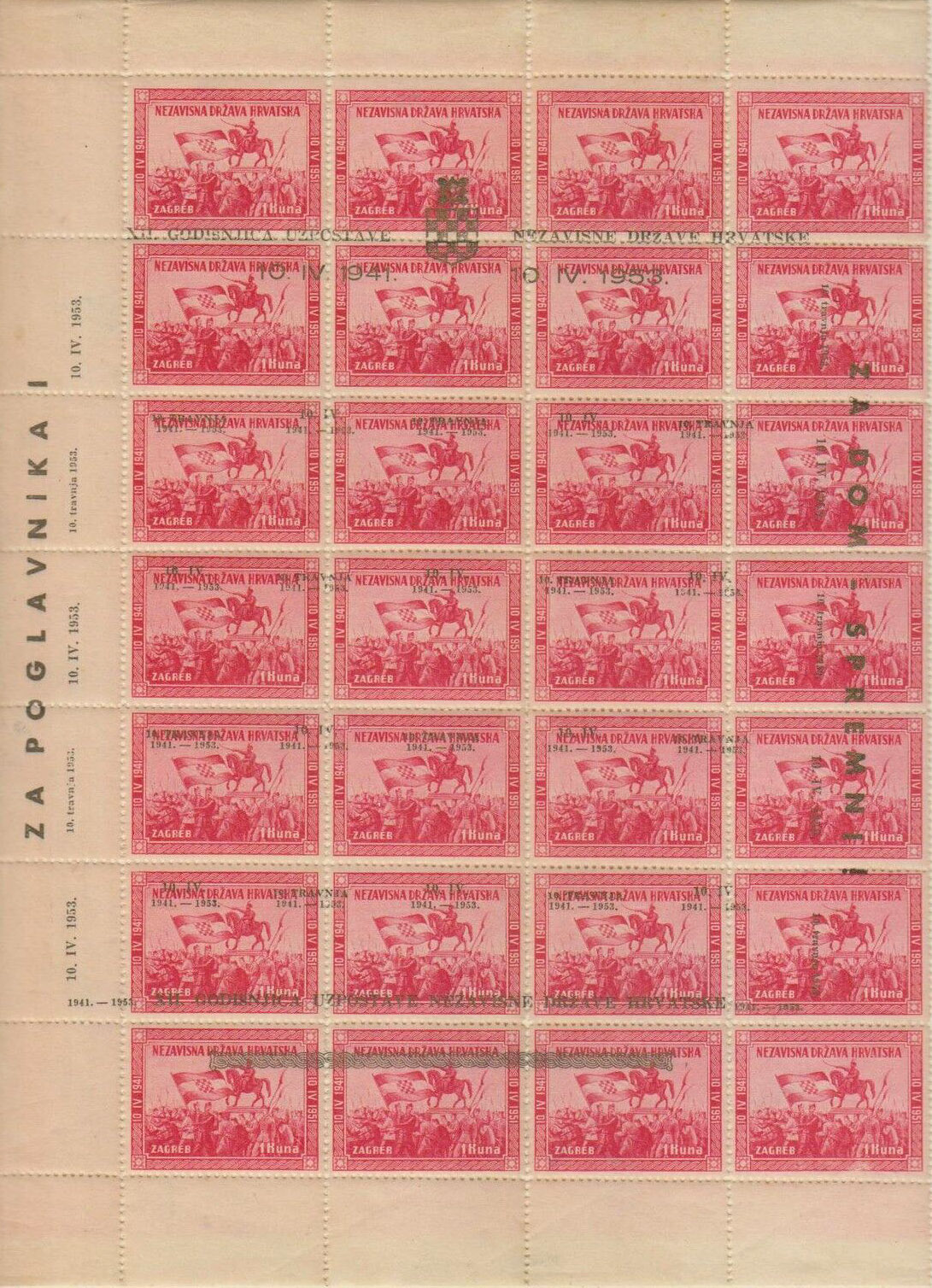
[Below: Rare sheet with overprint - circa 1953]
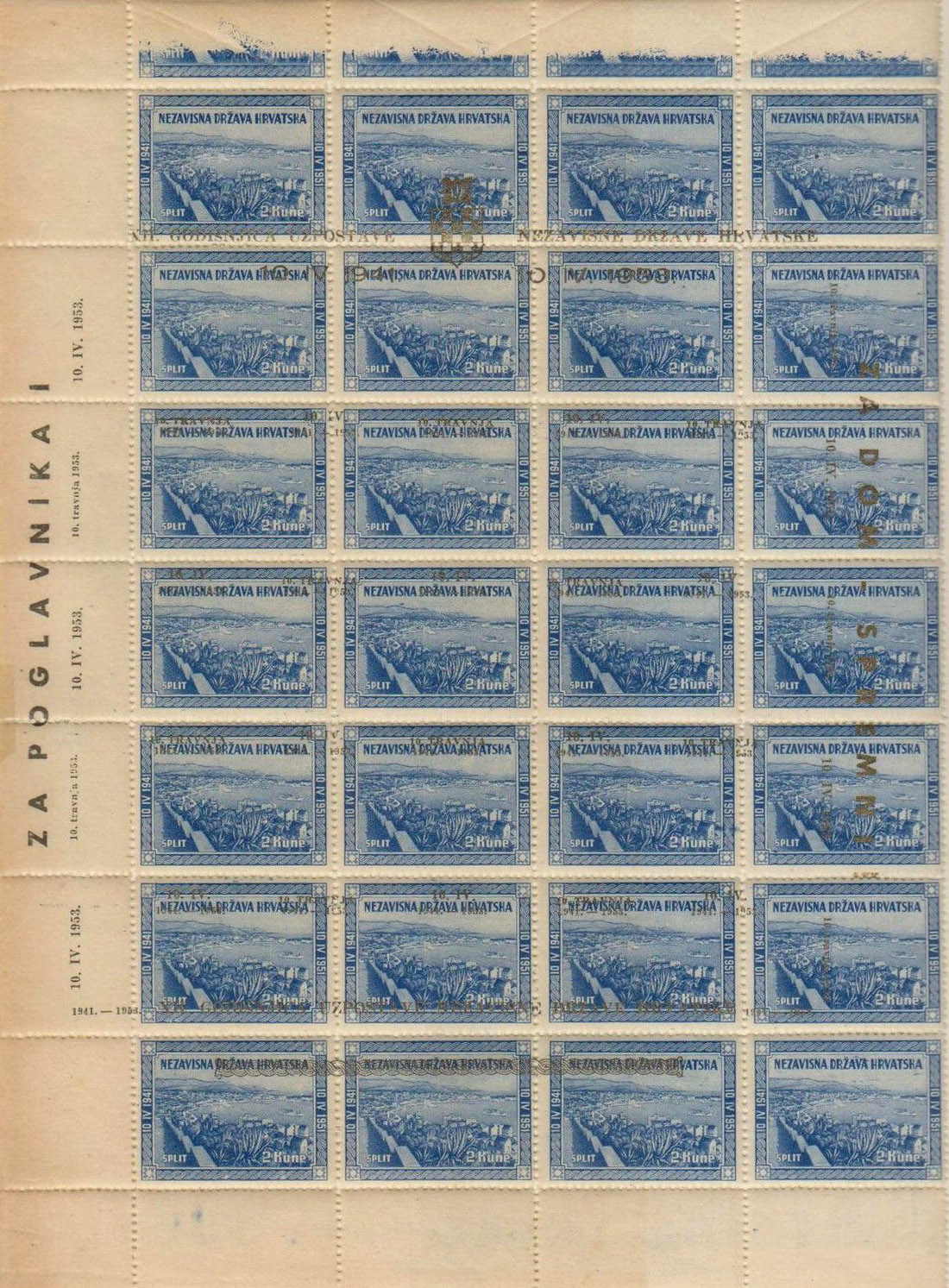
[Below: With 'VP' overprint from 1951.]

[Below: Blue overprint with the date '1942-1992'.]

[Below: Rare sheet with overprint - circa 1953]
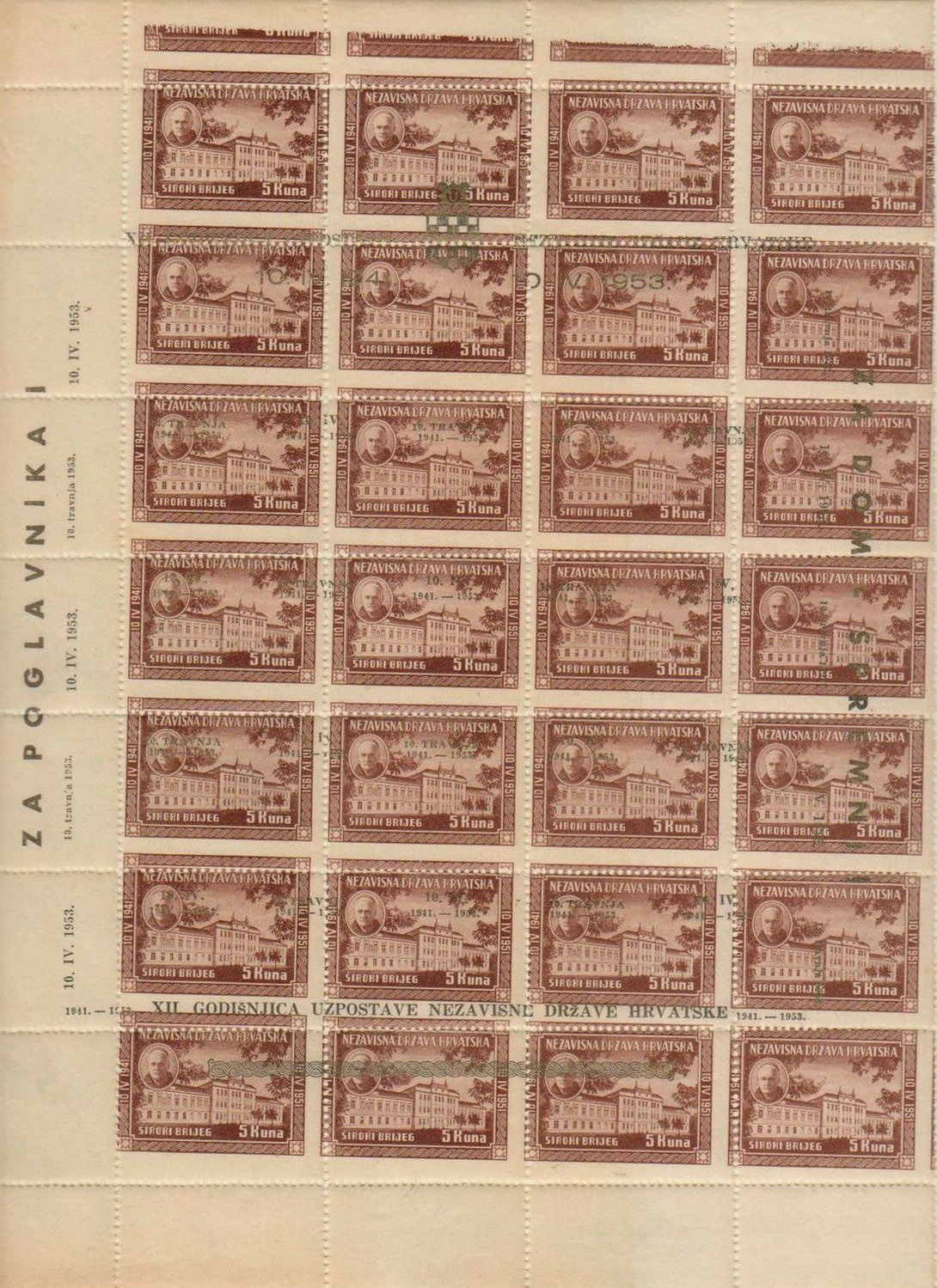
[Below: Rare sheet with overprint - circa 1953]
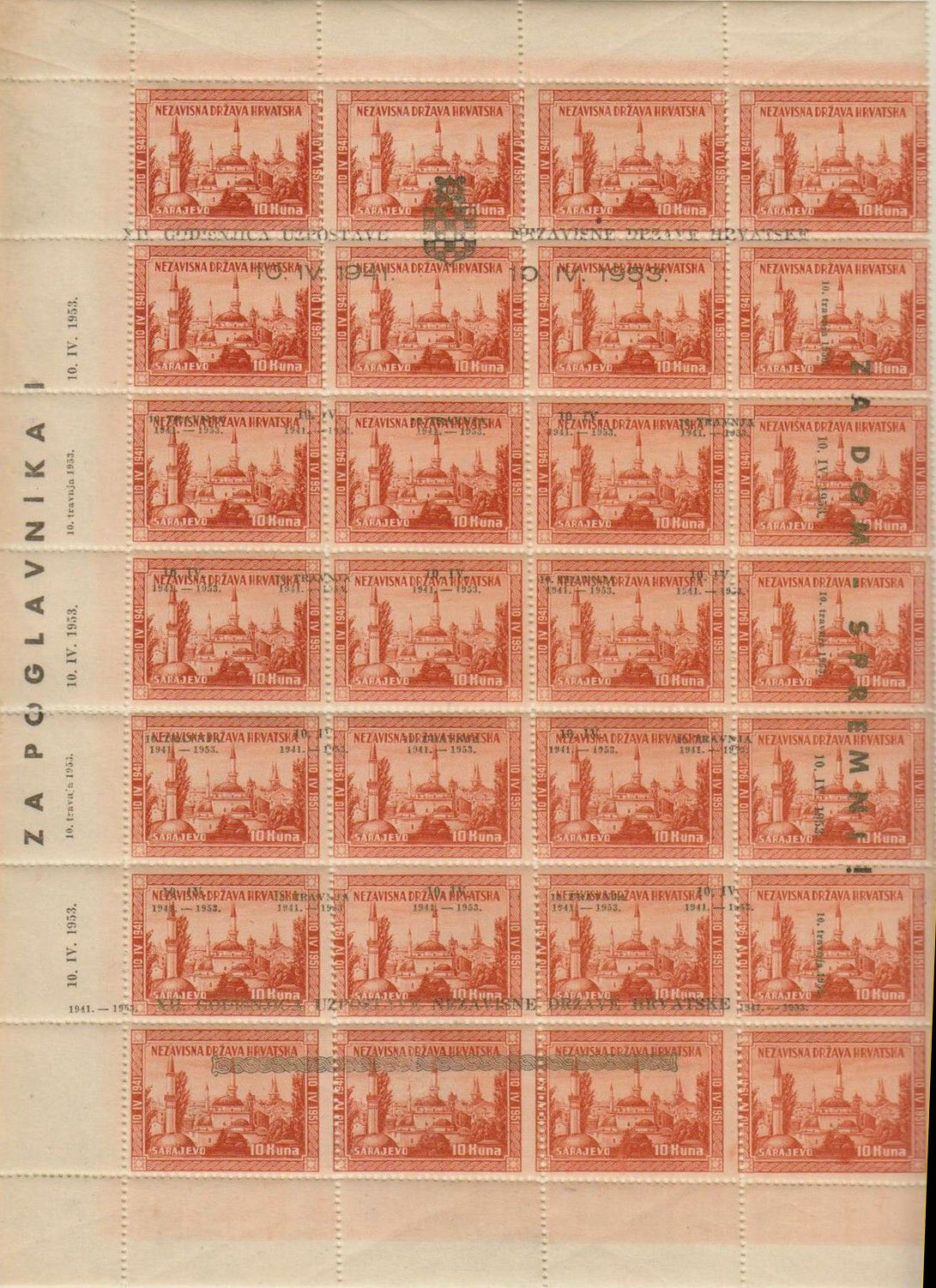
[Below: Rare sheet with overprint - circa 1953]
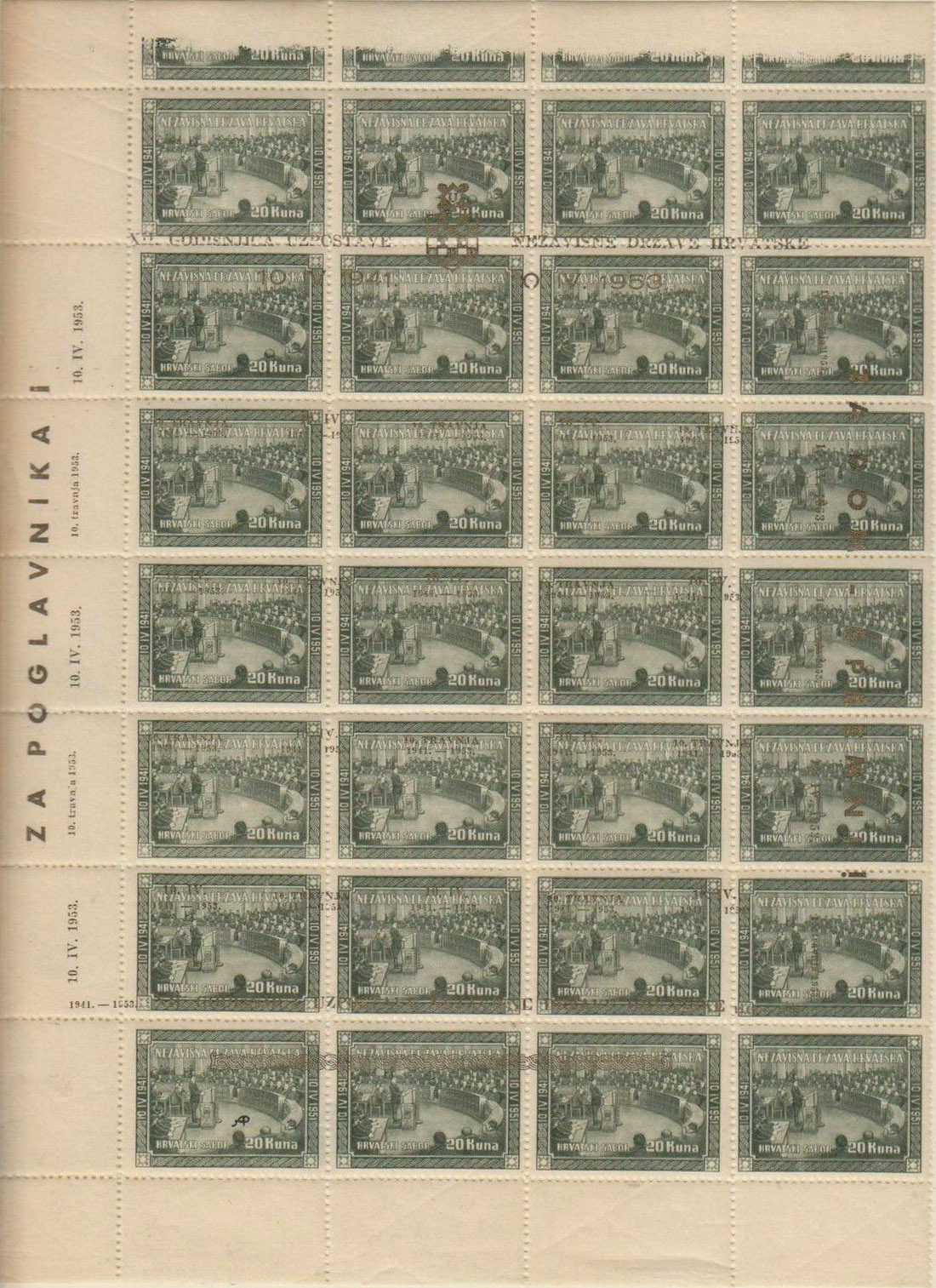
[Below: Rare sheet with overprint - circa 1953]
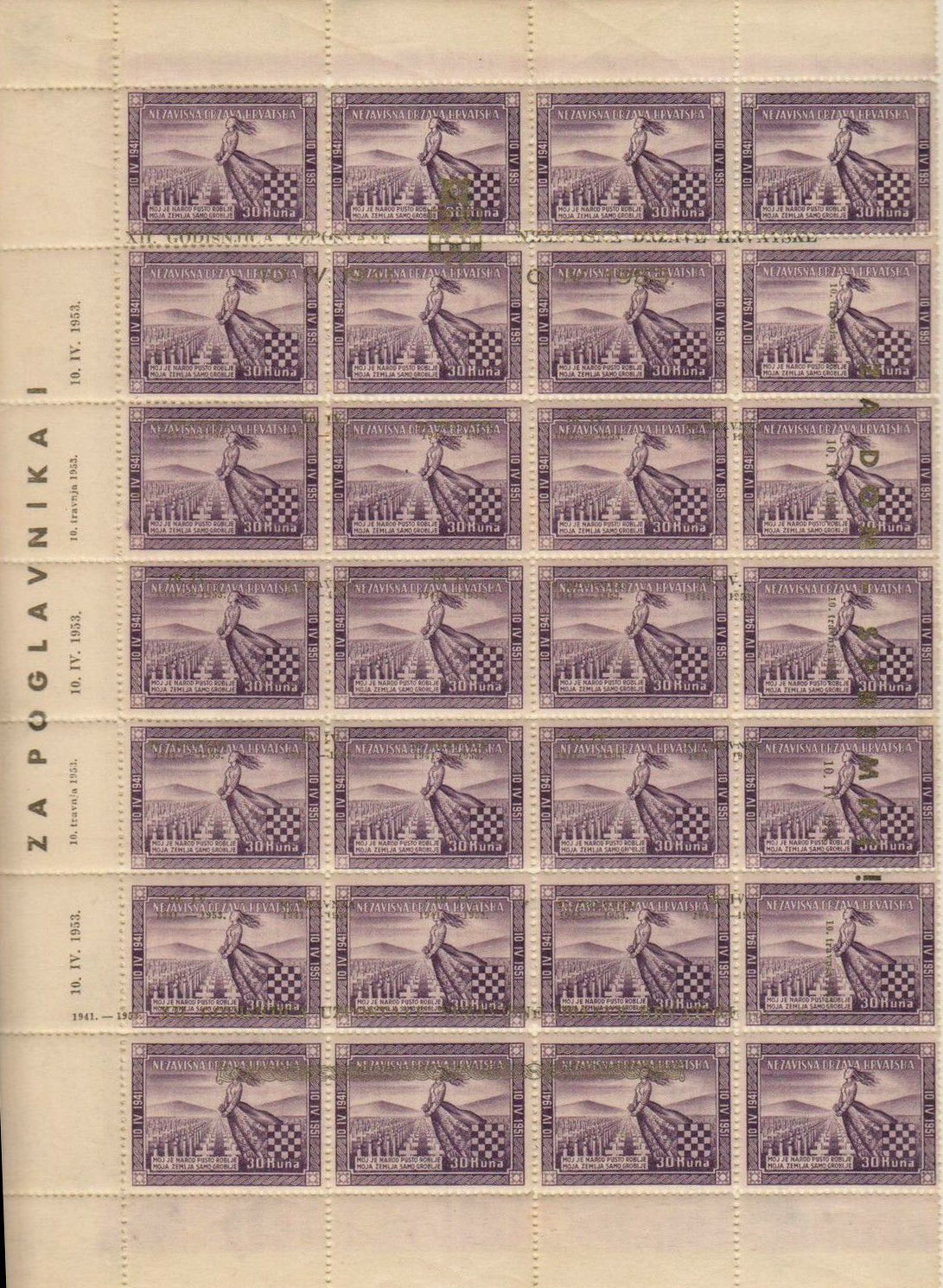
[Below: Circa 1955]
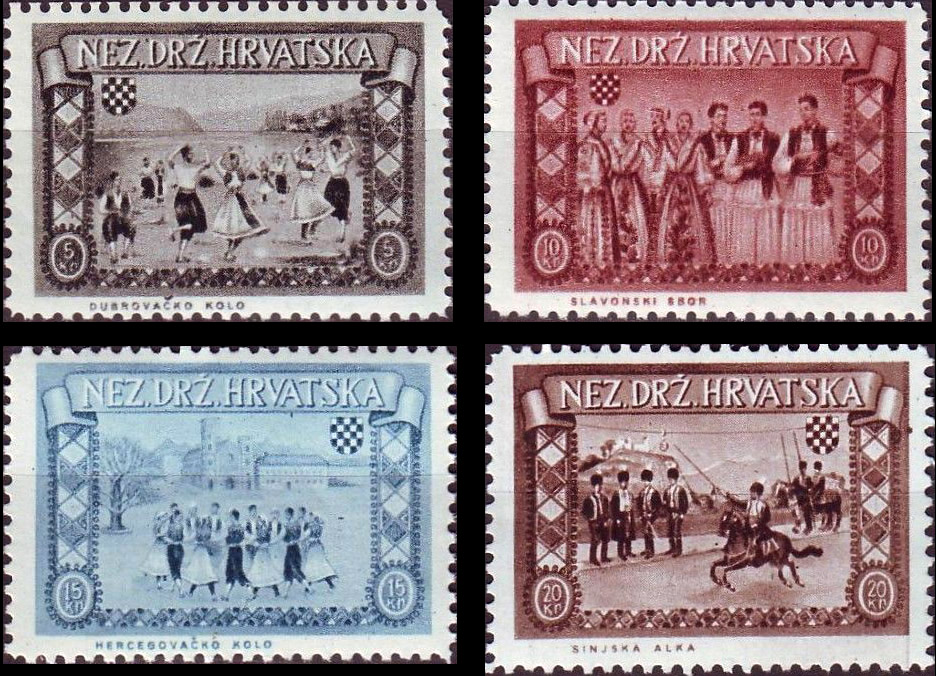
[Below: Perforated sheet, circa 1961]
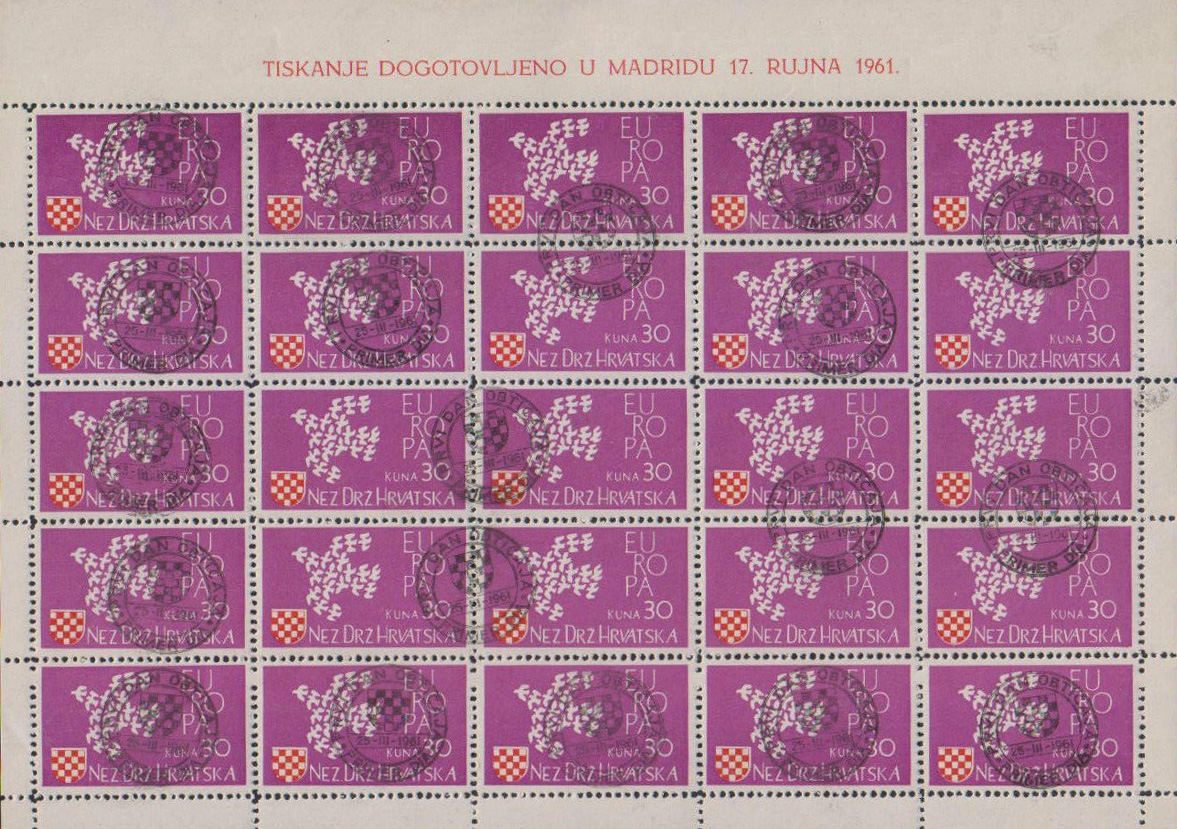
[Below: Imperforated sheet, circa 1962]
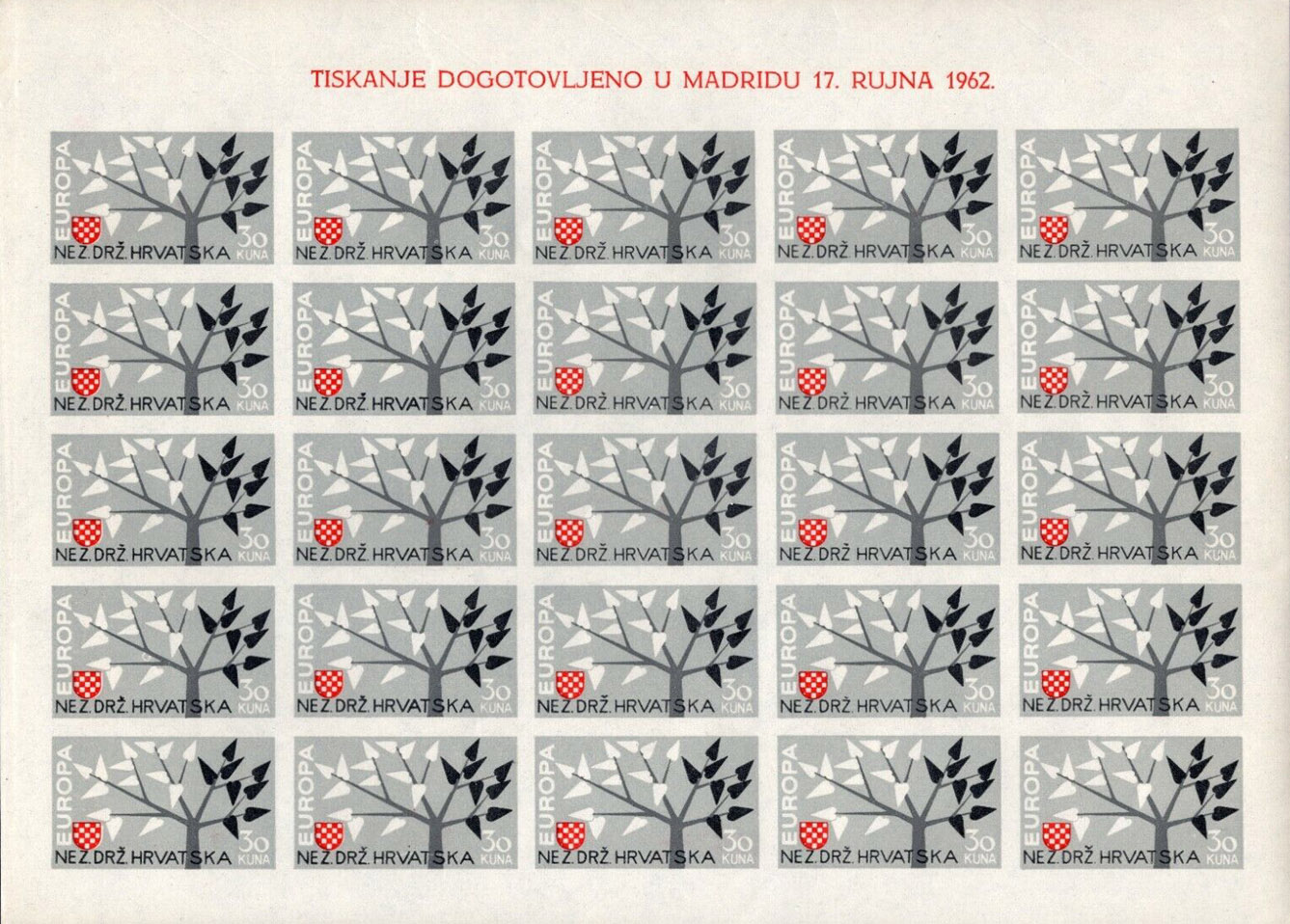
[Below: Imperforated sheet, canceled, circa 1962]
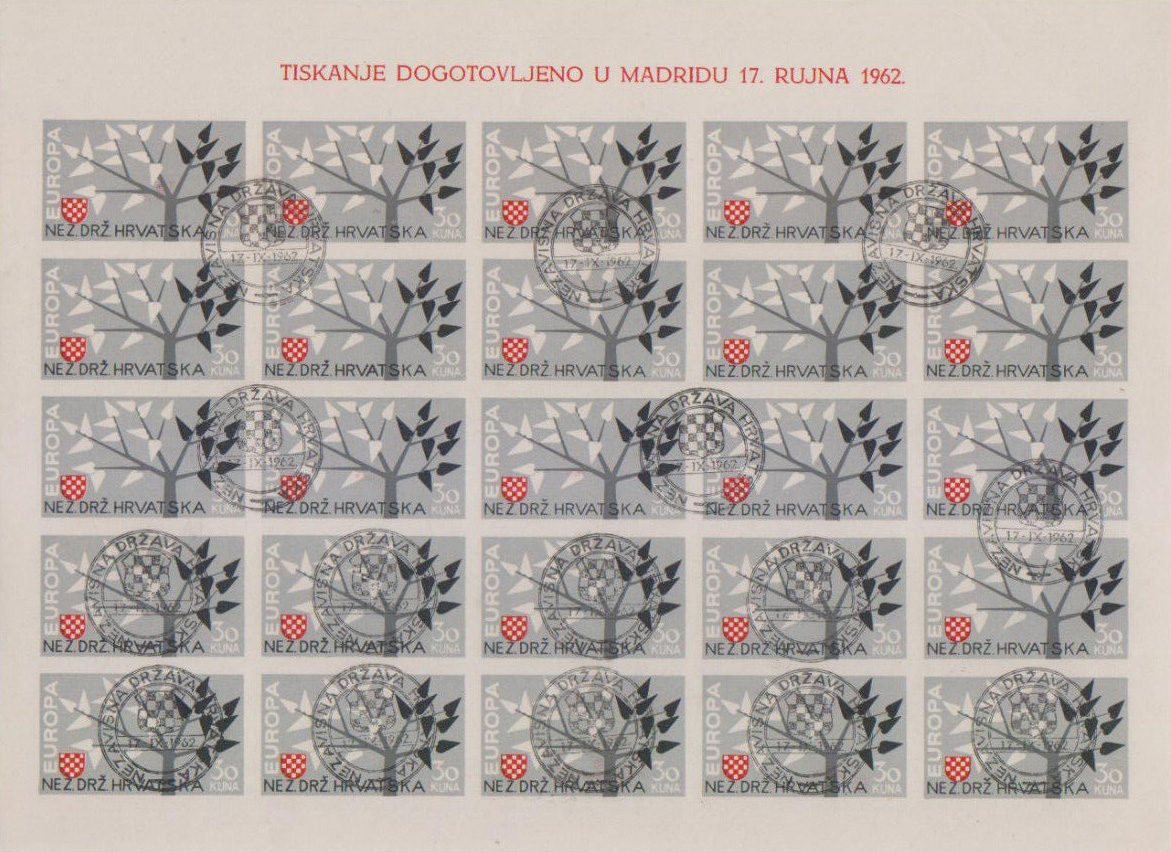
[Below: Circa 1964]
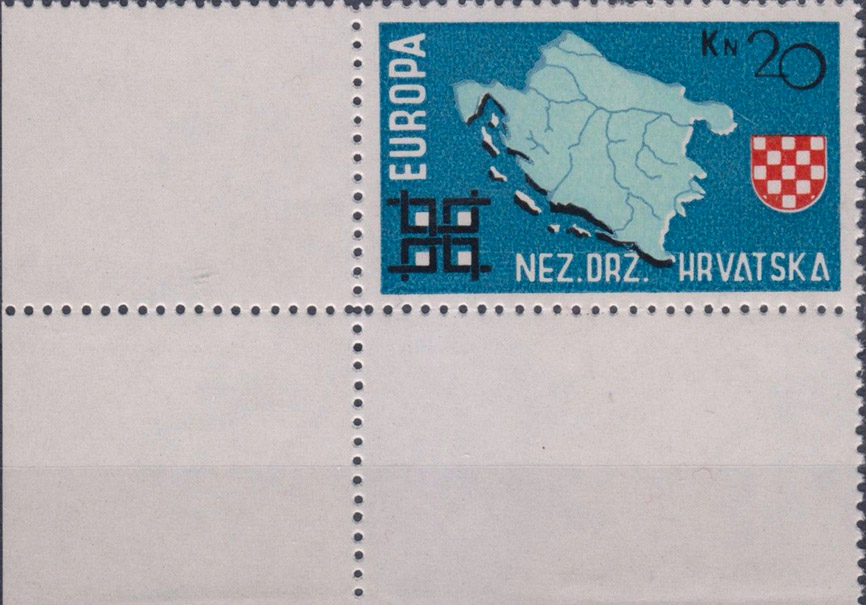
[Below: Imperforate sheet, circa 1964]
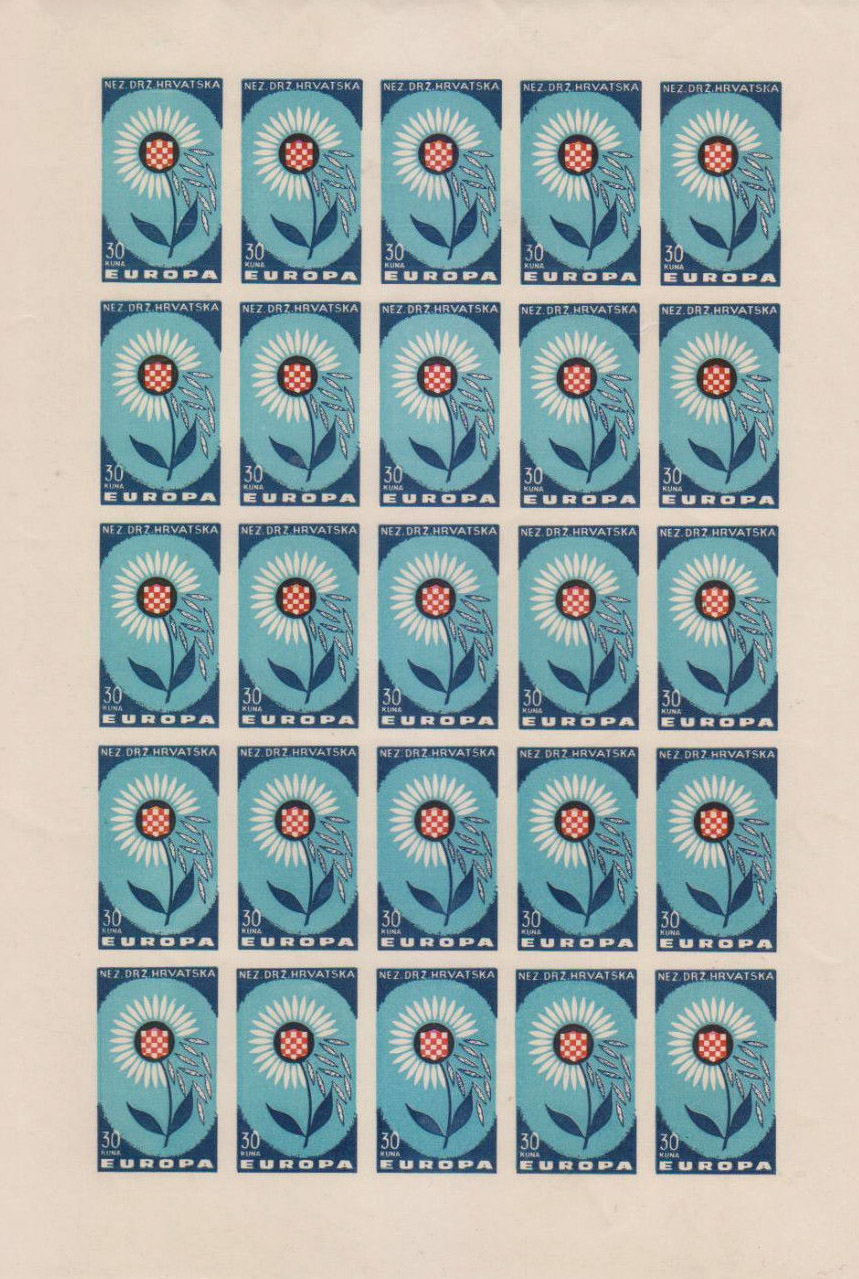
[Below: Canceled sheet, circa 1964]
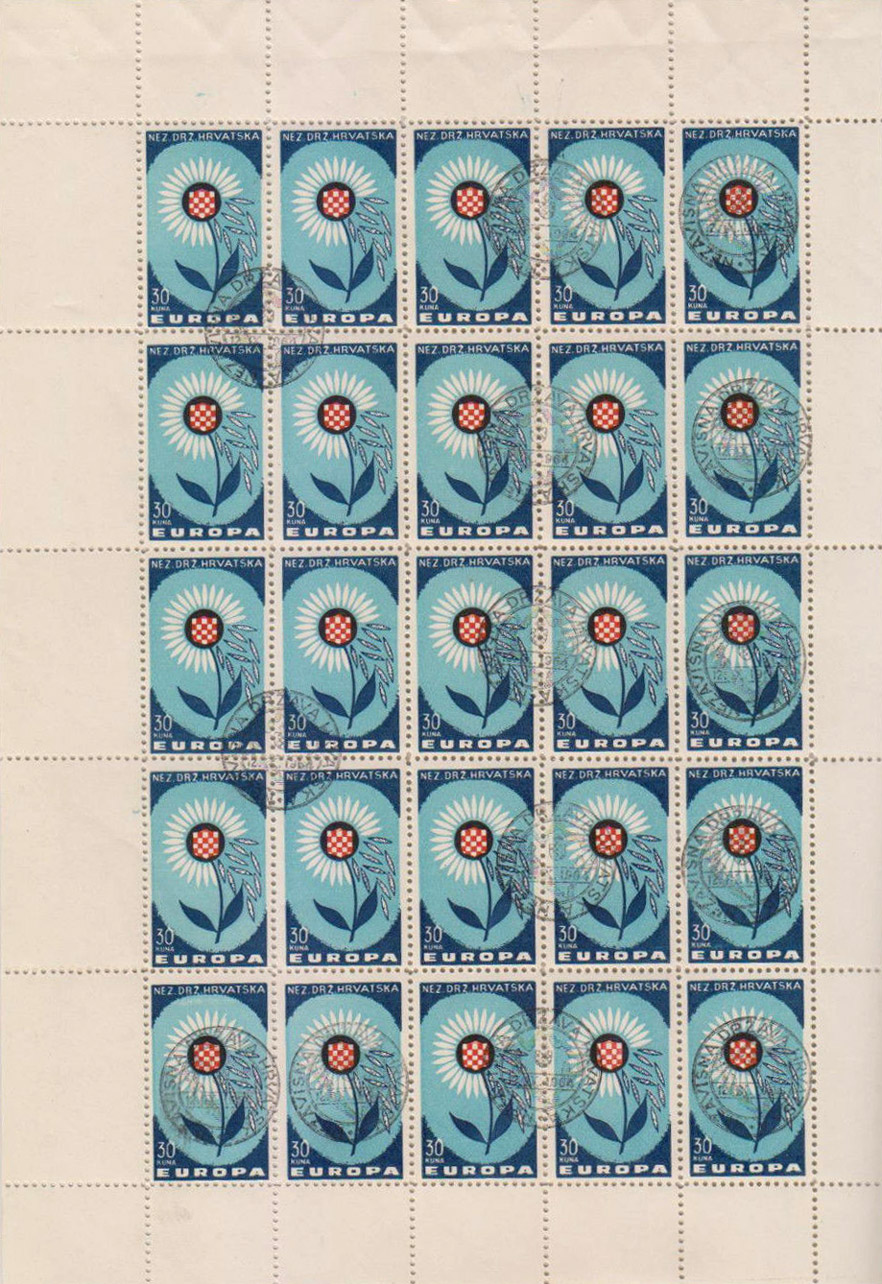
[Below: Perforate sheet, circa 1964]
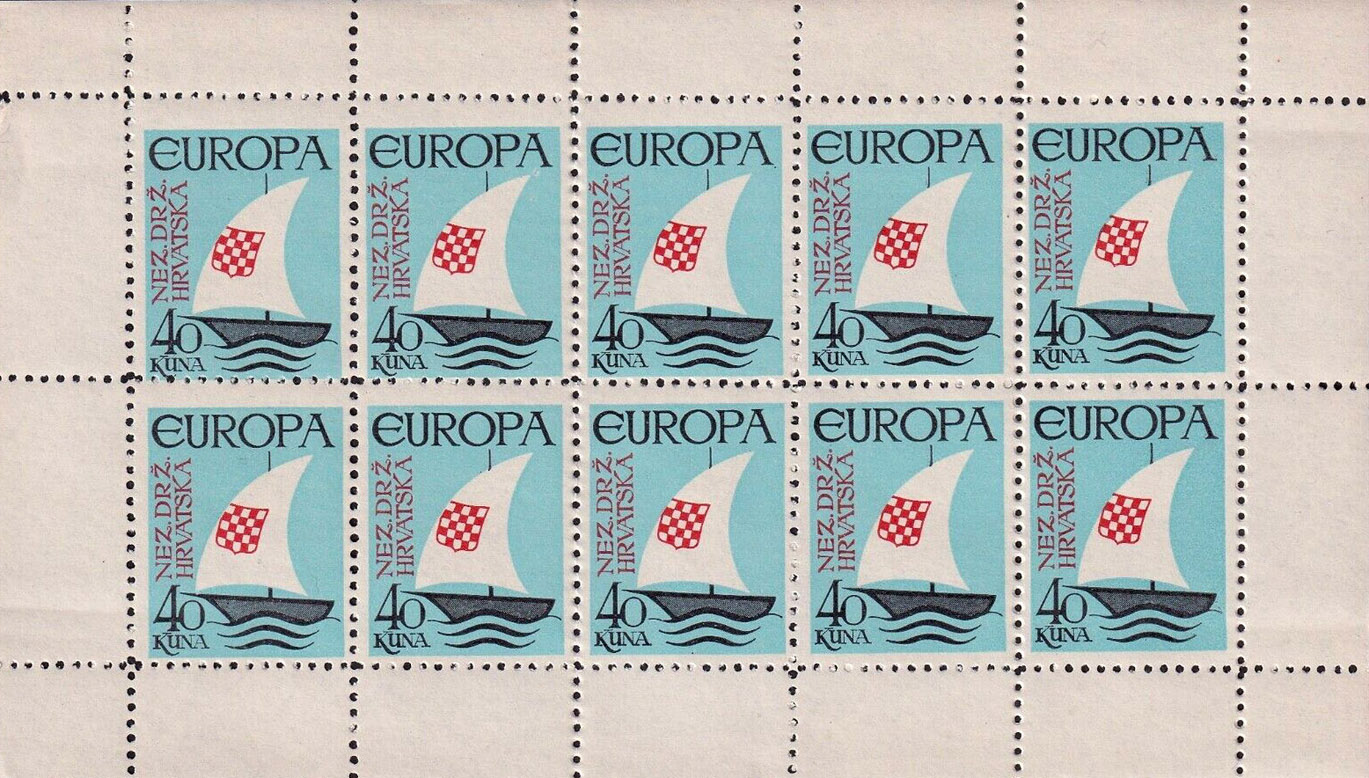
[Below: Imperforate sheet, circa 1964]

[Below: Perforated sheet, canceled, circa 1965]
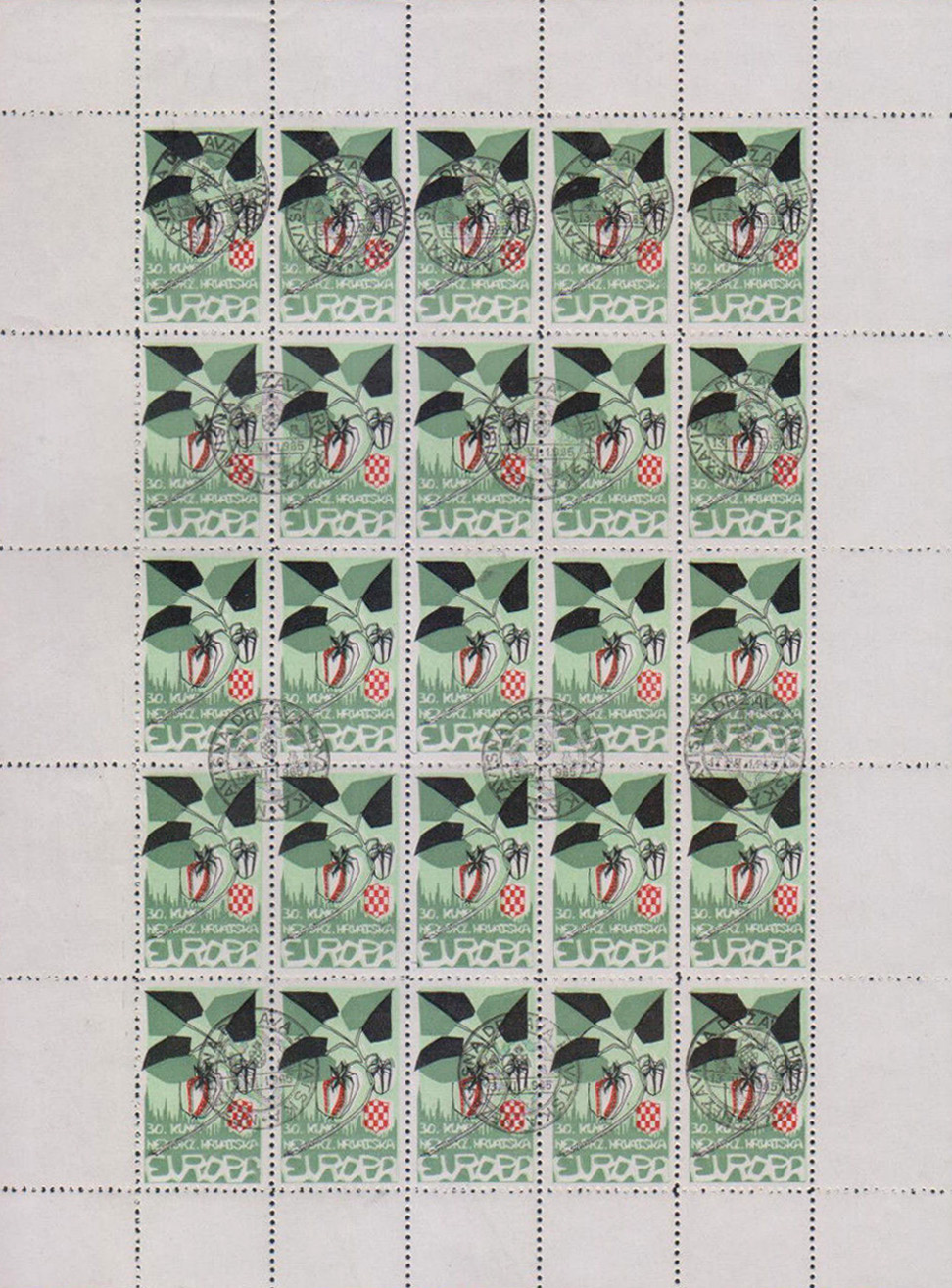
[Below: Imperforate sheet, circa 1965]
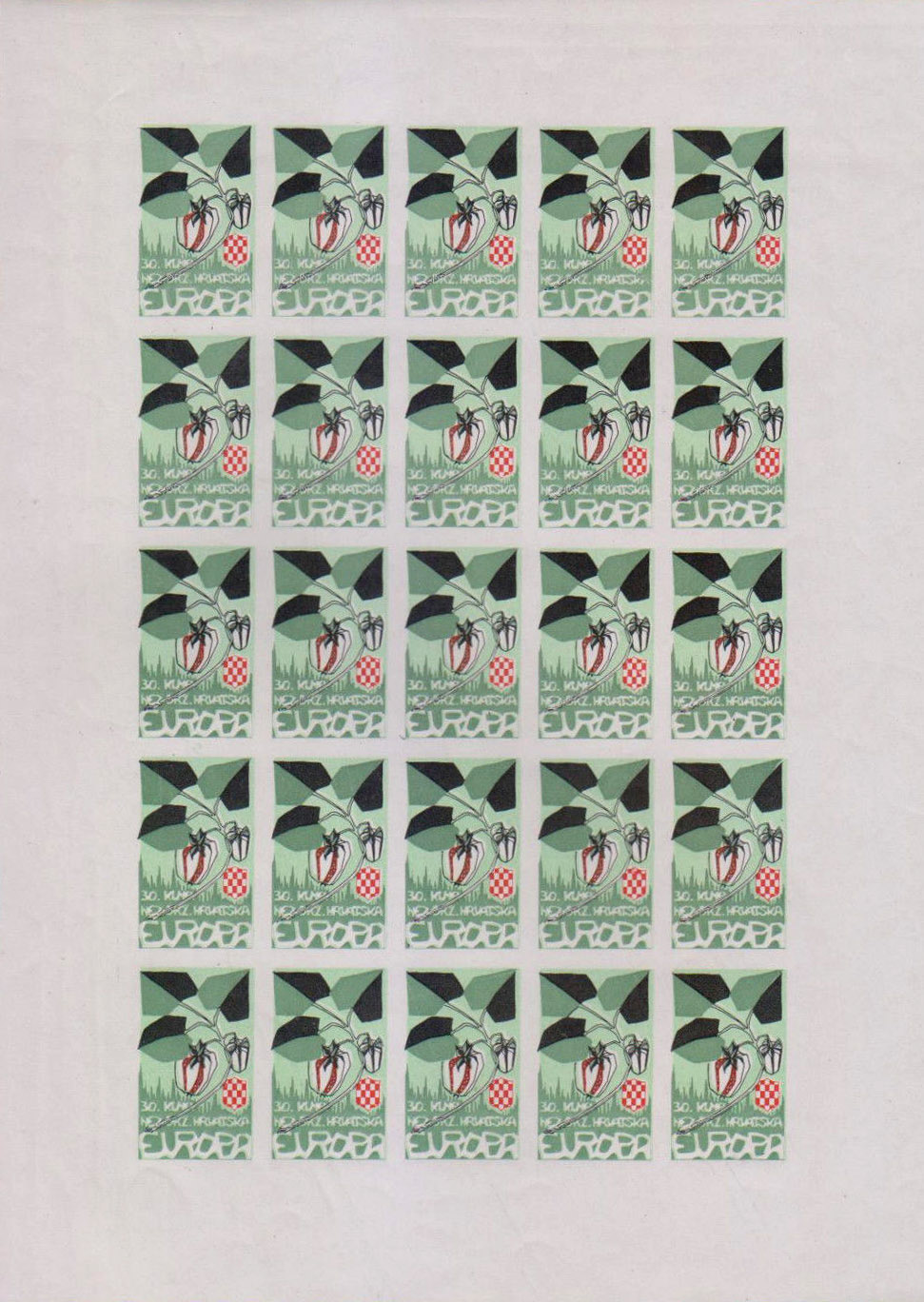
[Below: Imperforate sheet, canceled, circa 1965]
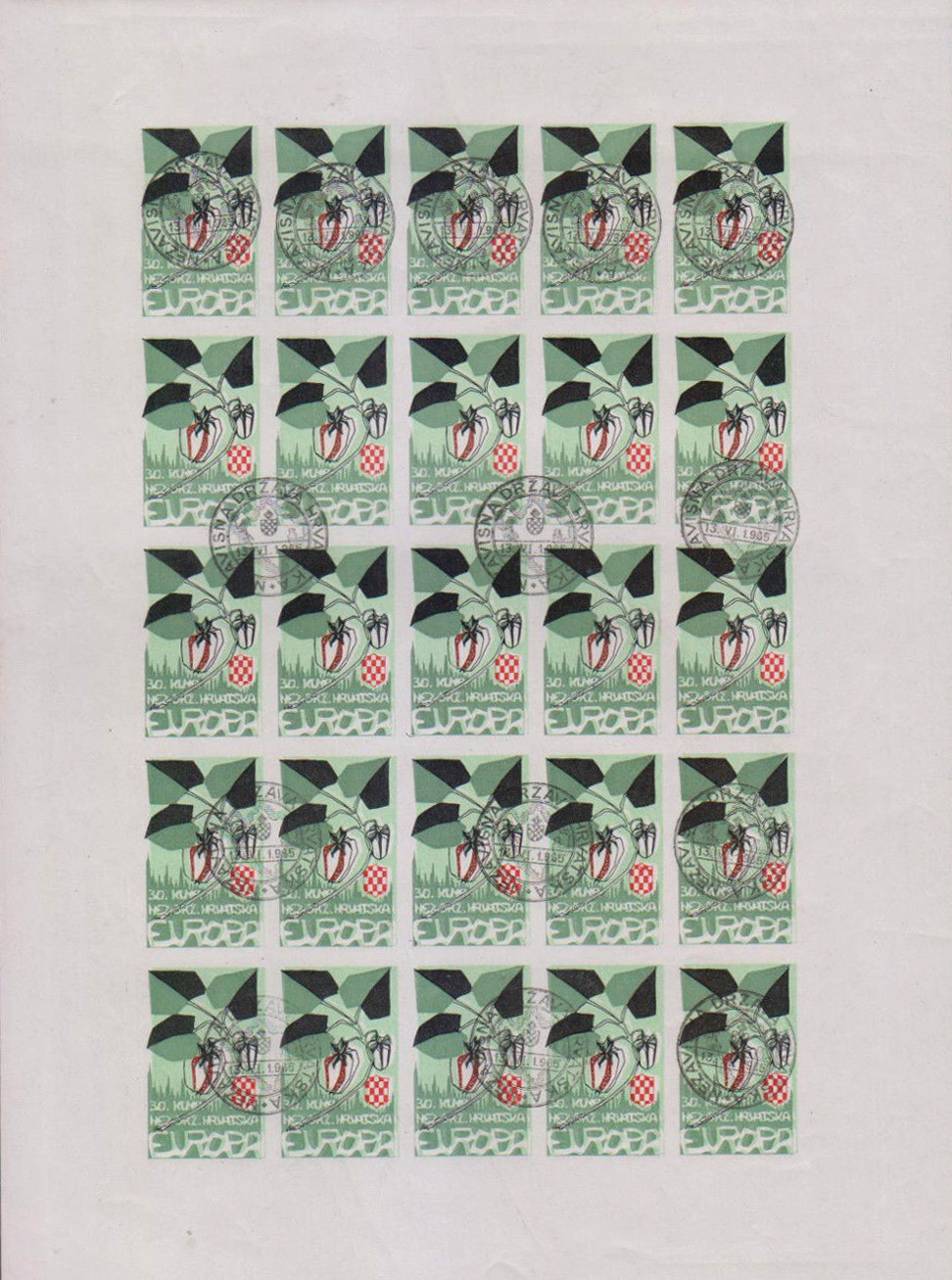
[Below: Perforated sheet, circa 1965 - this Croatian stamp mourns the 20th anniversary of the mass murder of tens of thousands of Croatian men, women and children in and around the town of Bleiburg. These unfortunate souls were handed over by the British to communist murderers after they had surrendered to the British.]
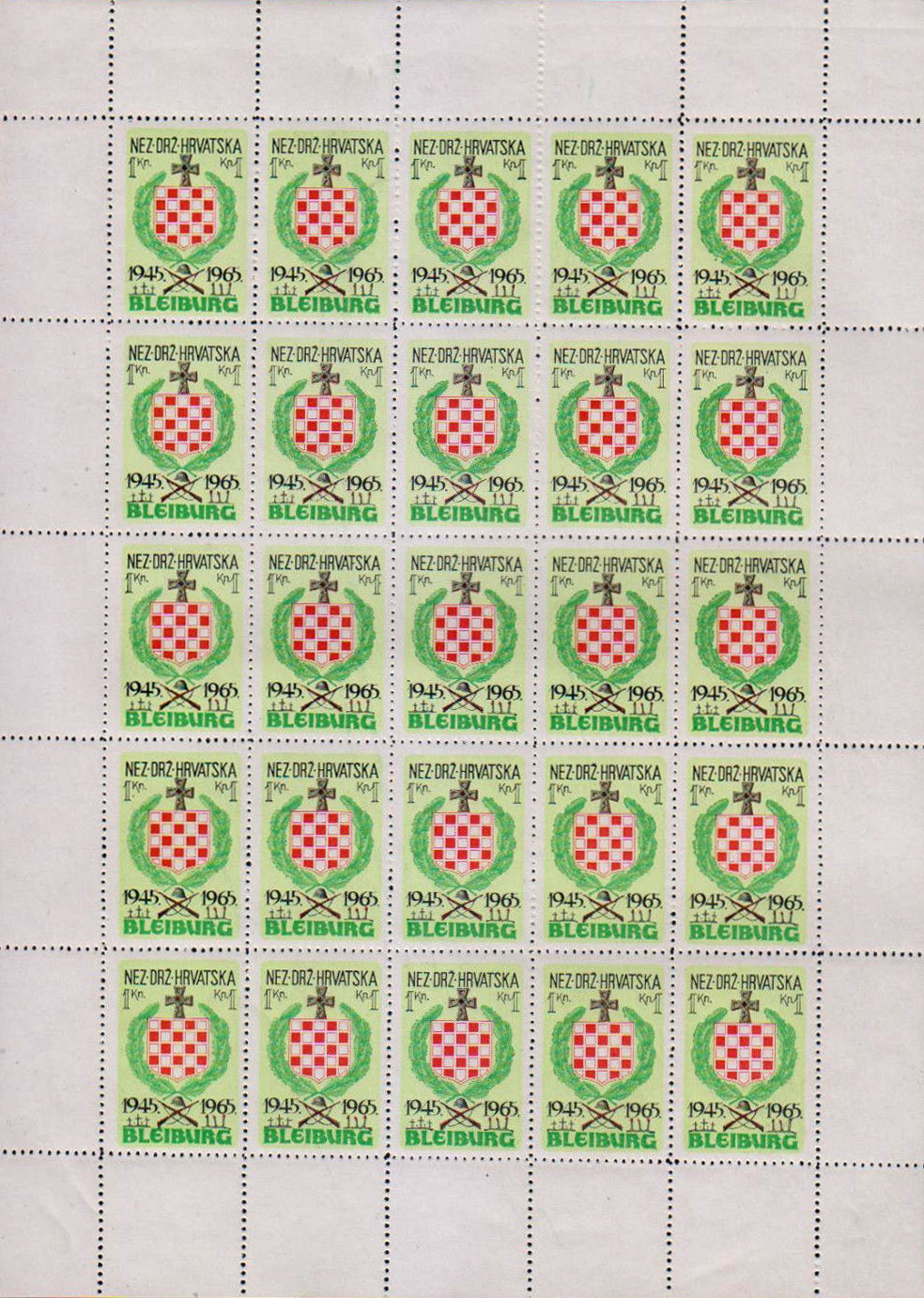
[Below: Imerforated sheet, circa 1965.]
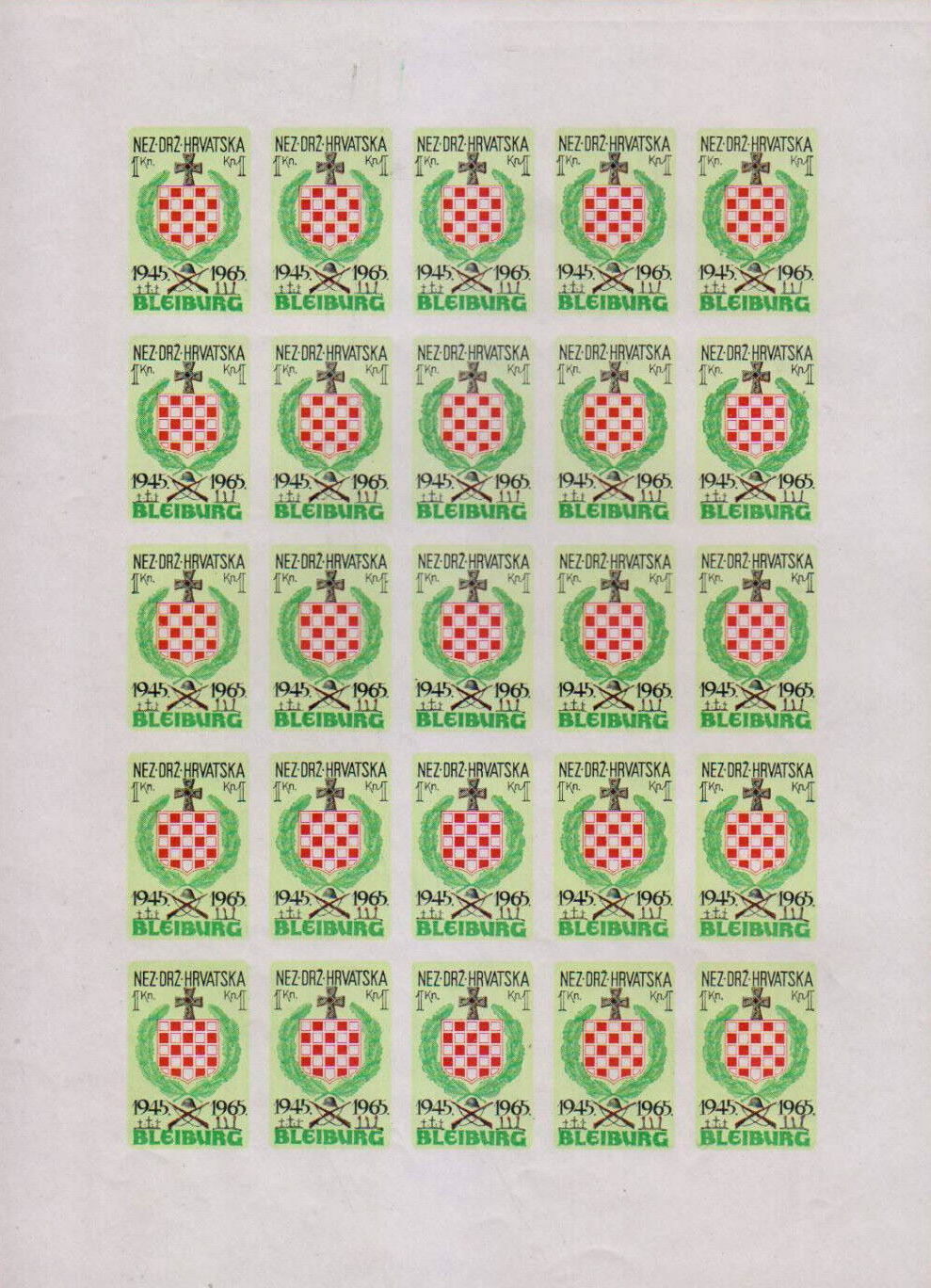
[Below: Perforated sheet, overprinted in German and English, circa 1965.]

[Below: Imperforate sheet, overprinted in German and English, circa 1965.]
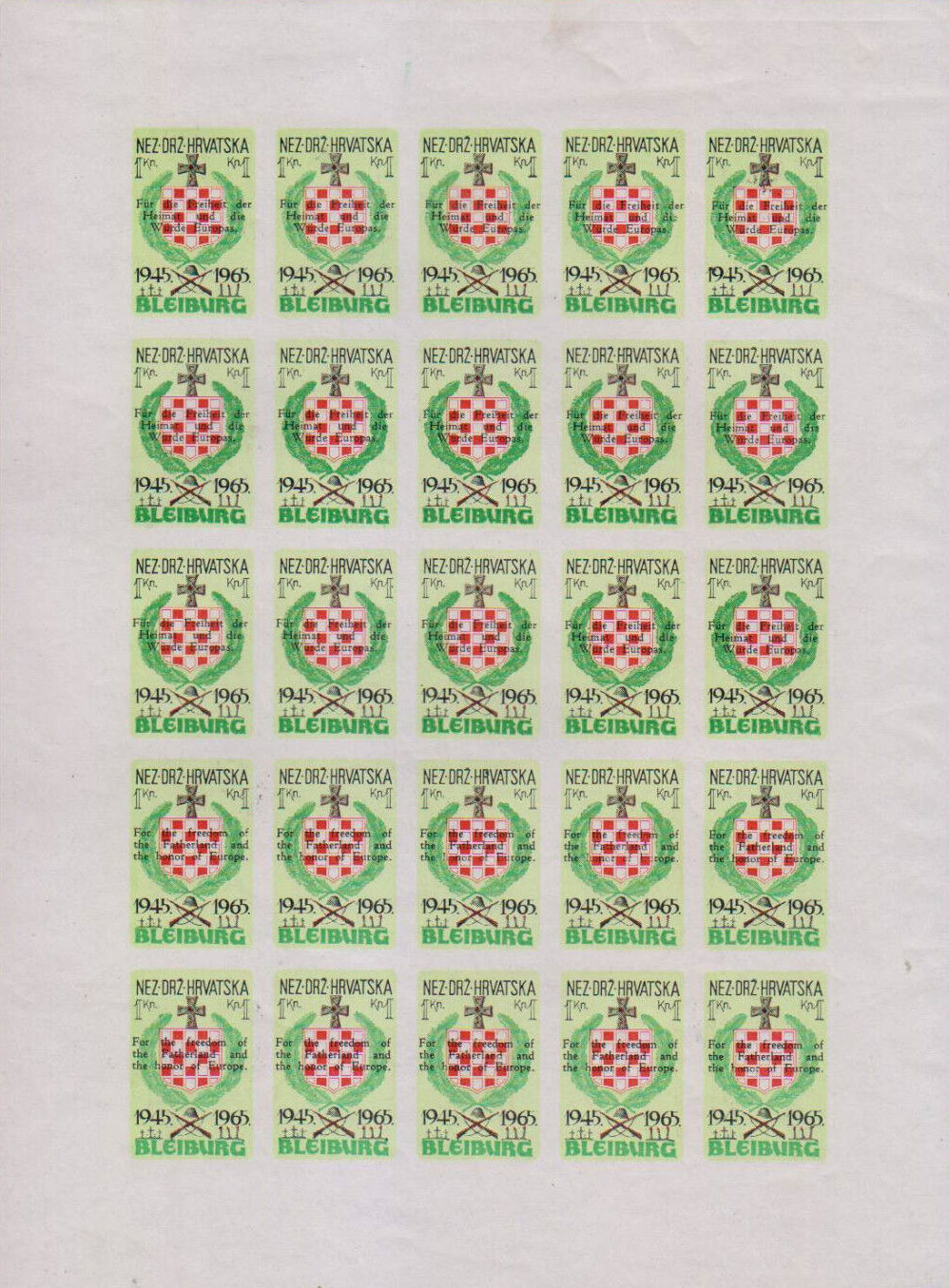
[Below: Perforated sheet, overprinted in French and Spanish, circa 1965.]
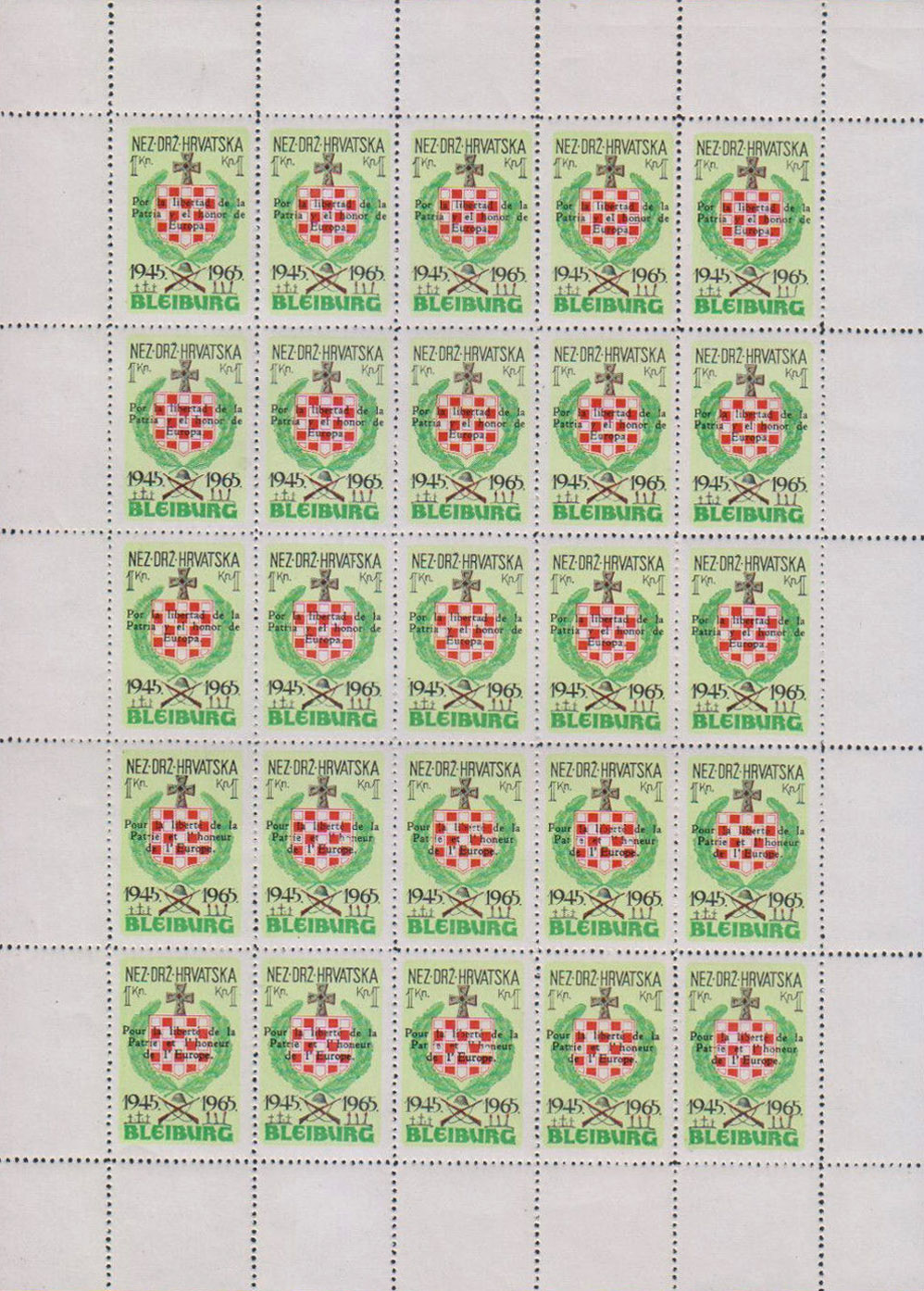
[Below: Imperforate sheet, overprinted in French and Spanish, circa 1965.]
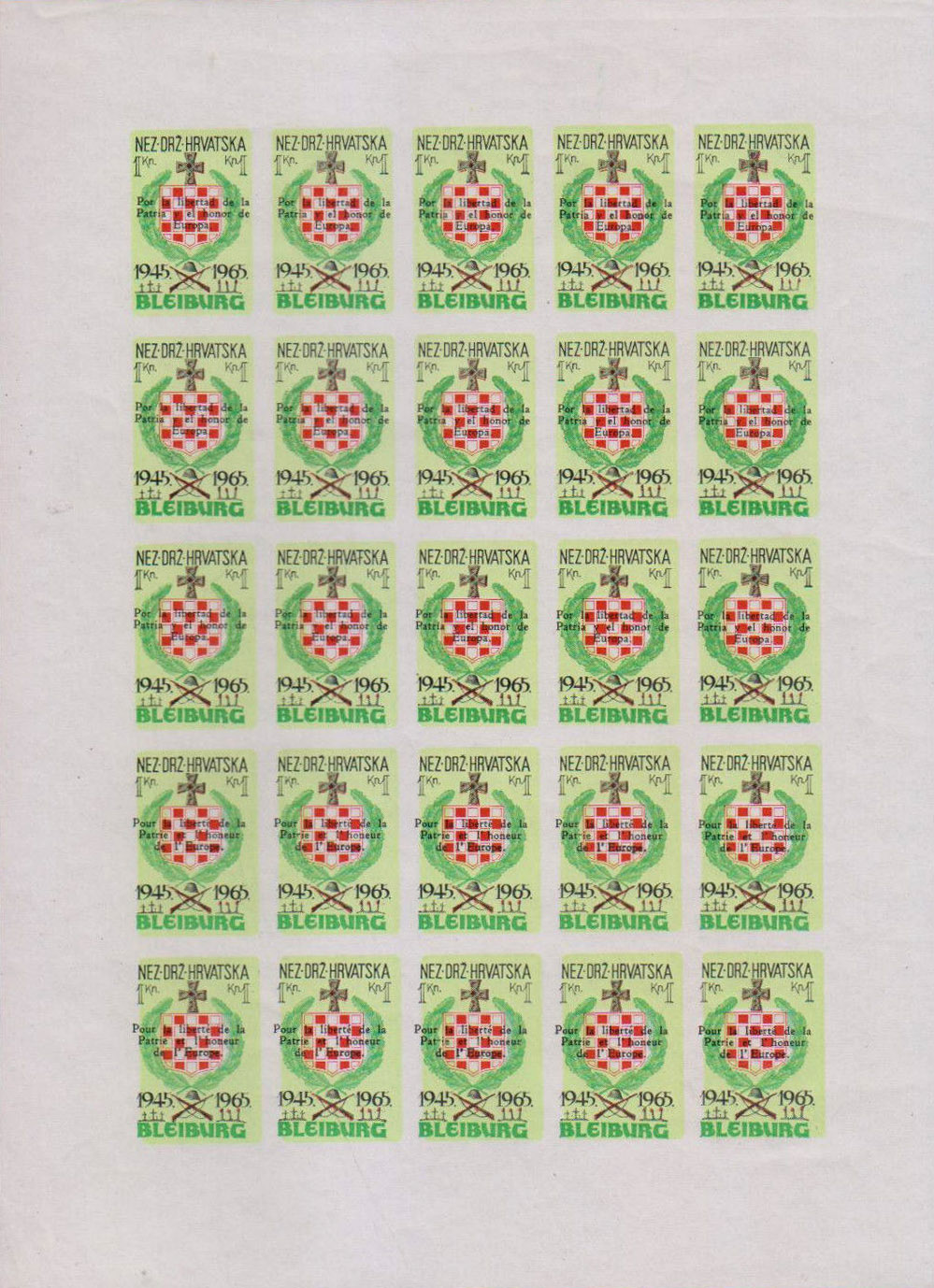
[Below: Imperforate sheet, circa 1966. 25th anniversary of Croatian government in exile.]
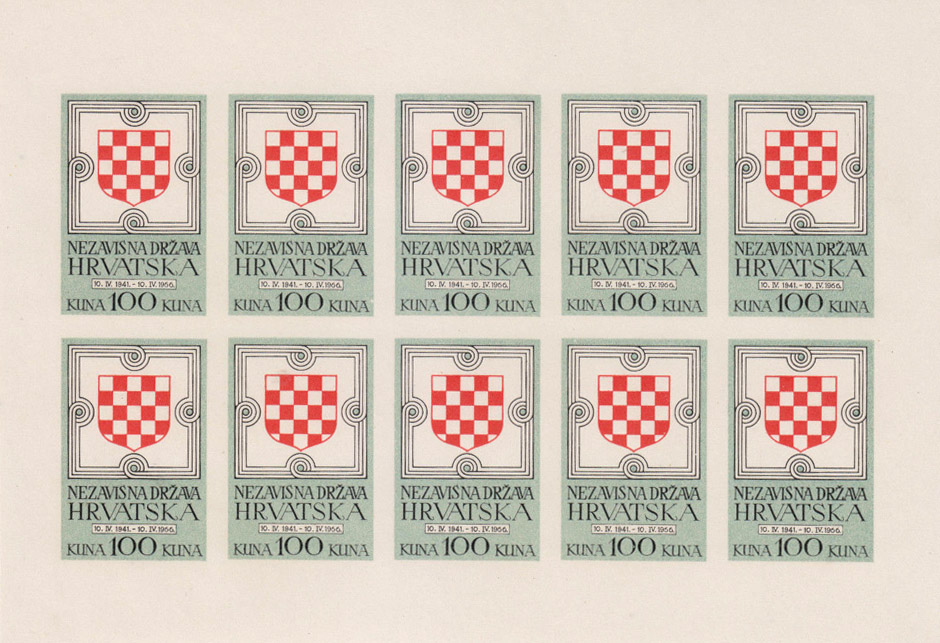
[Below: Imperforate sheet, design as above, proof on carton paper. Circa 1966. Enlarged to show detail.]
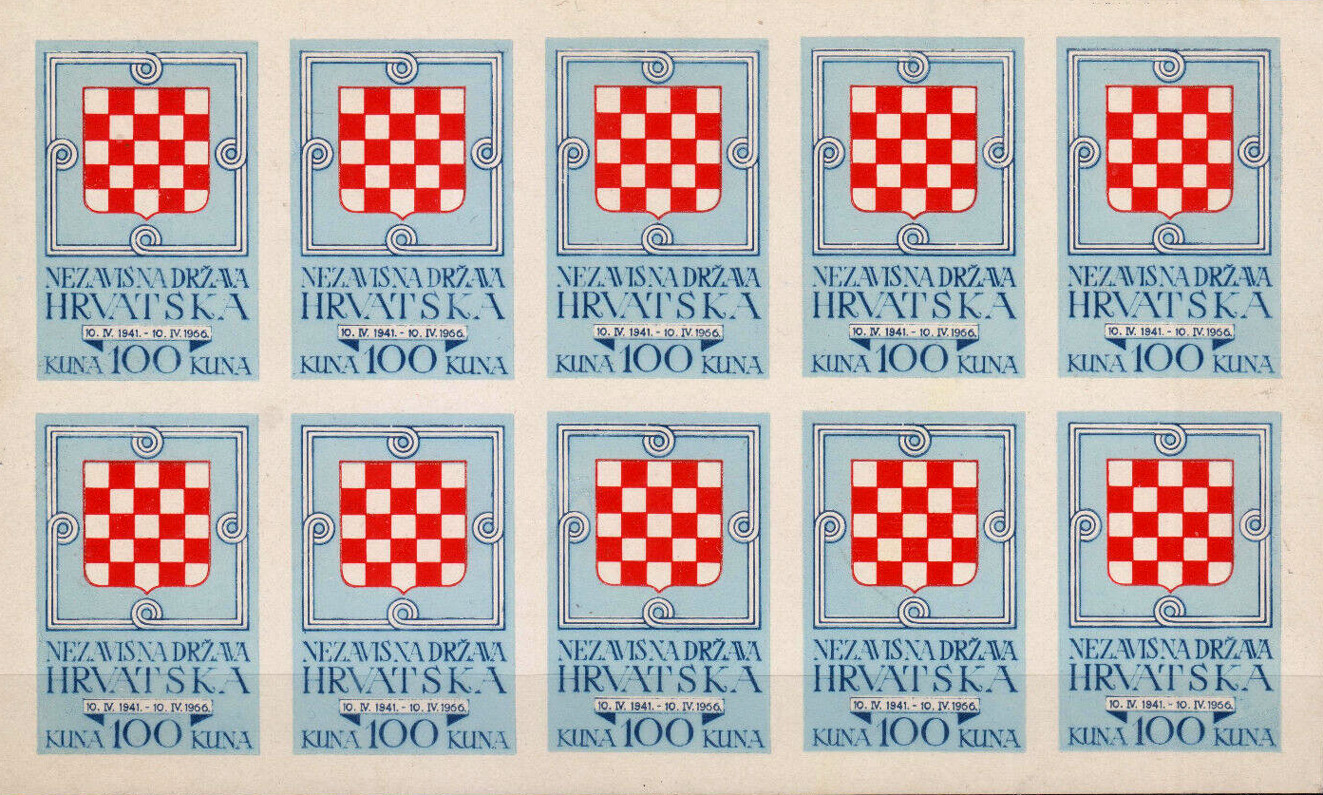
[Below: Perforate, selvage variety, circa 1967]
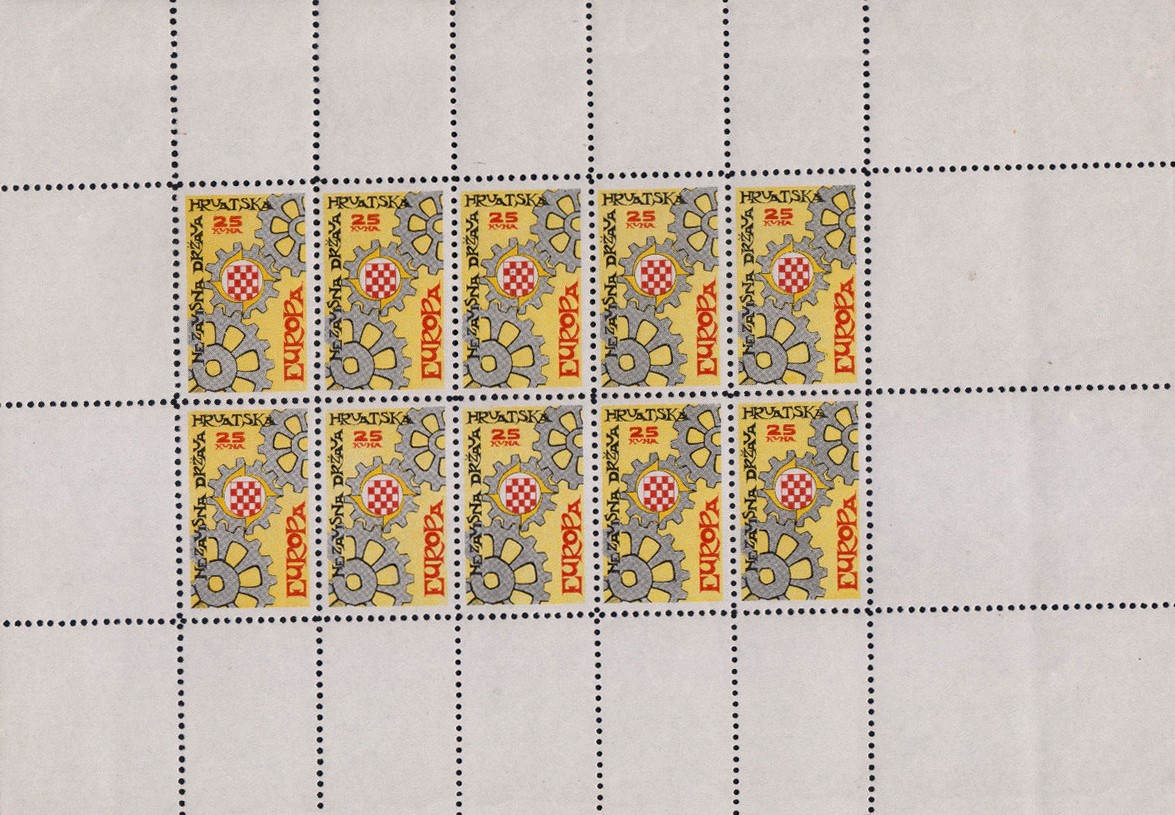
[Below: Perforate, selvage variety, circa 1967]
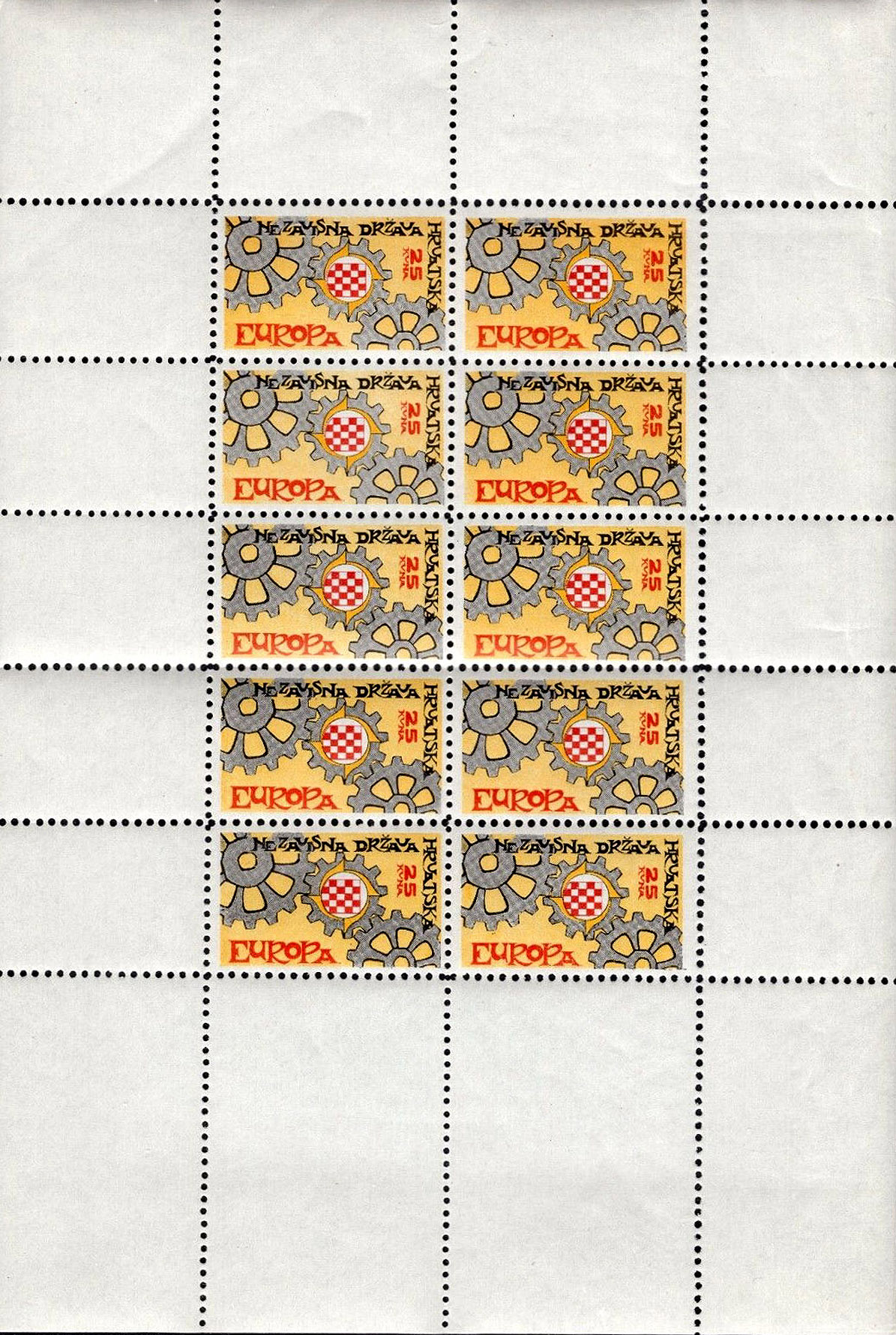
[Below: Circa 1967]
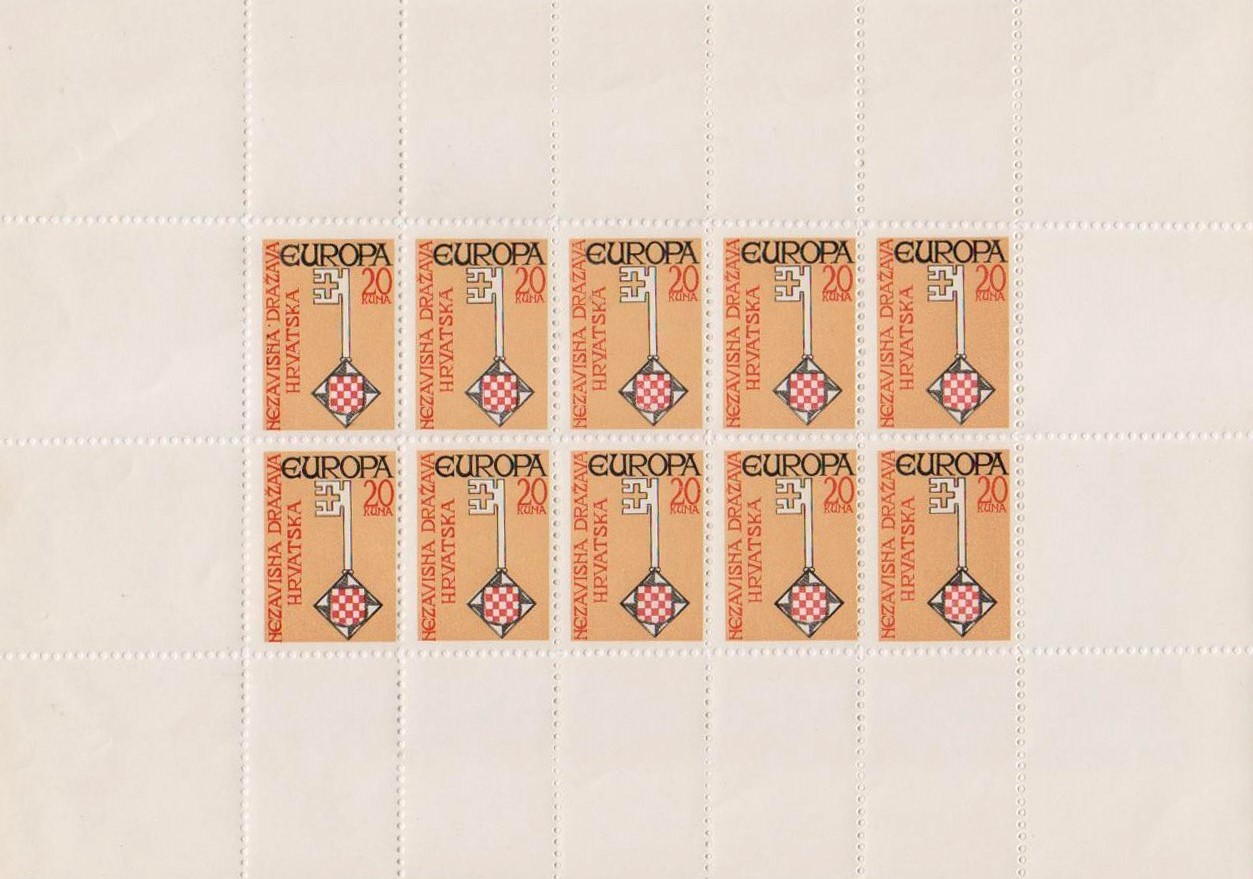
[Below: Peforate, circa 1969]
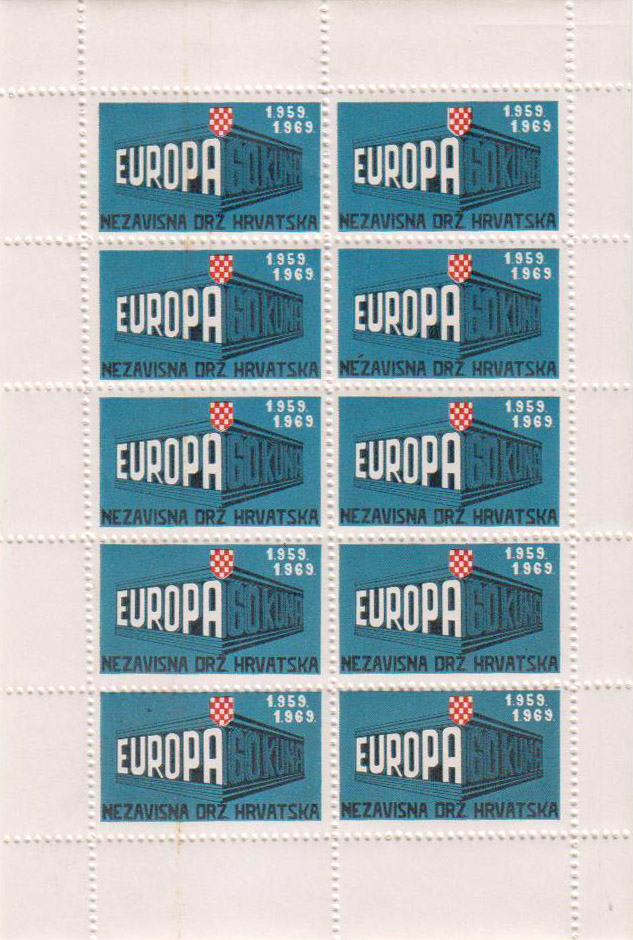
[Below: Imperforate version, used, circa 1969]
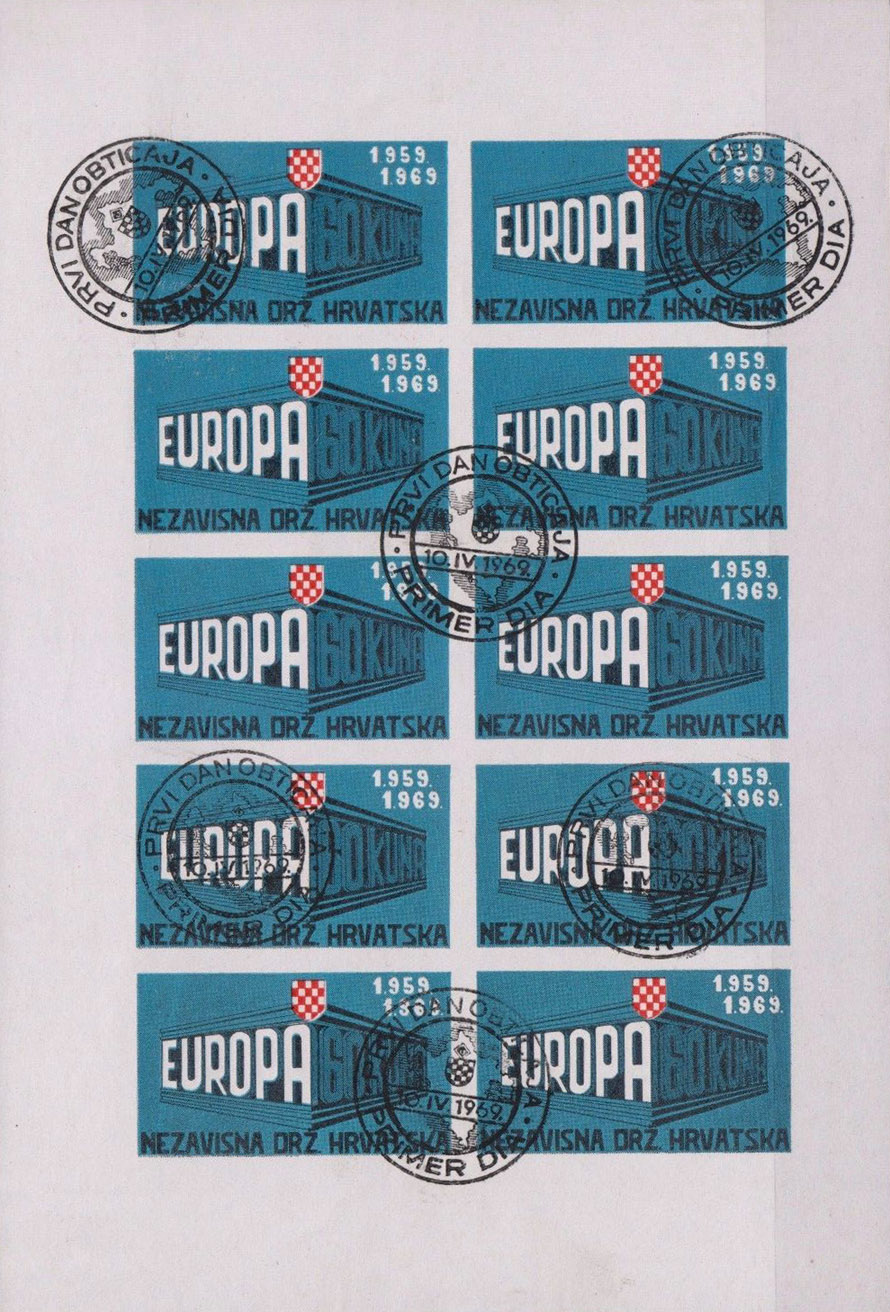
[Below: Imperforate, proof on carton paper, circa 1969]
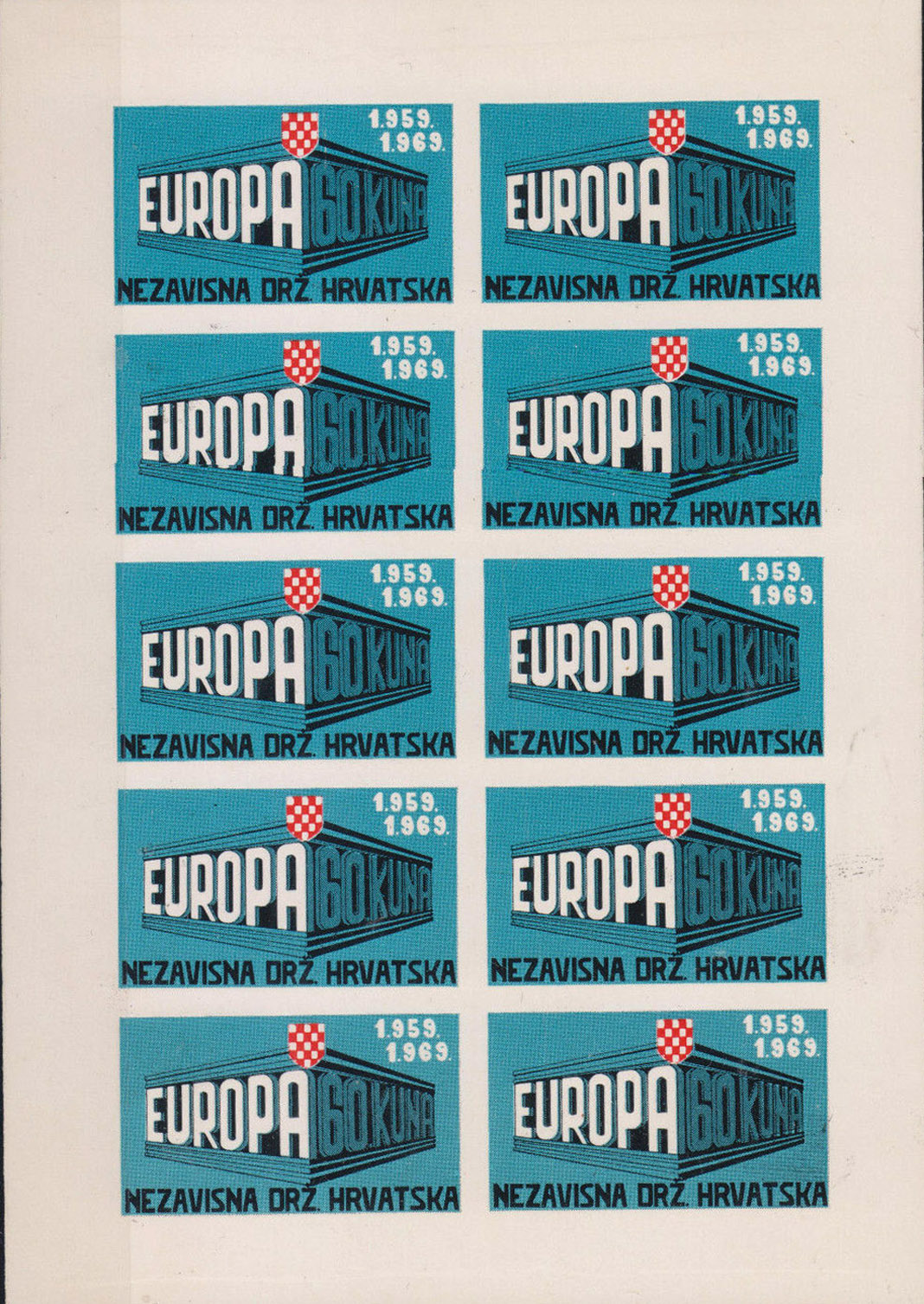
[Below: Imperforate version, proof on carton paper, circa 1969]
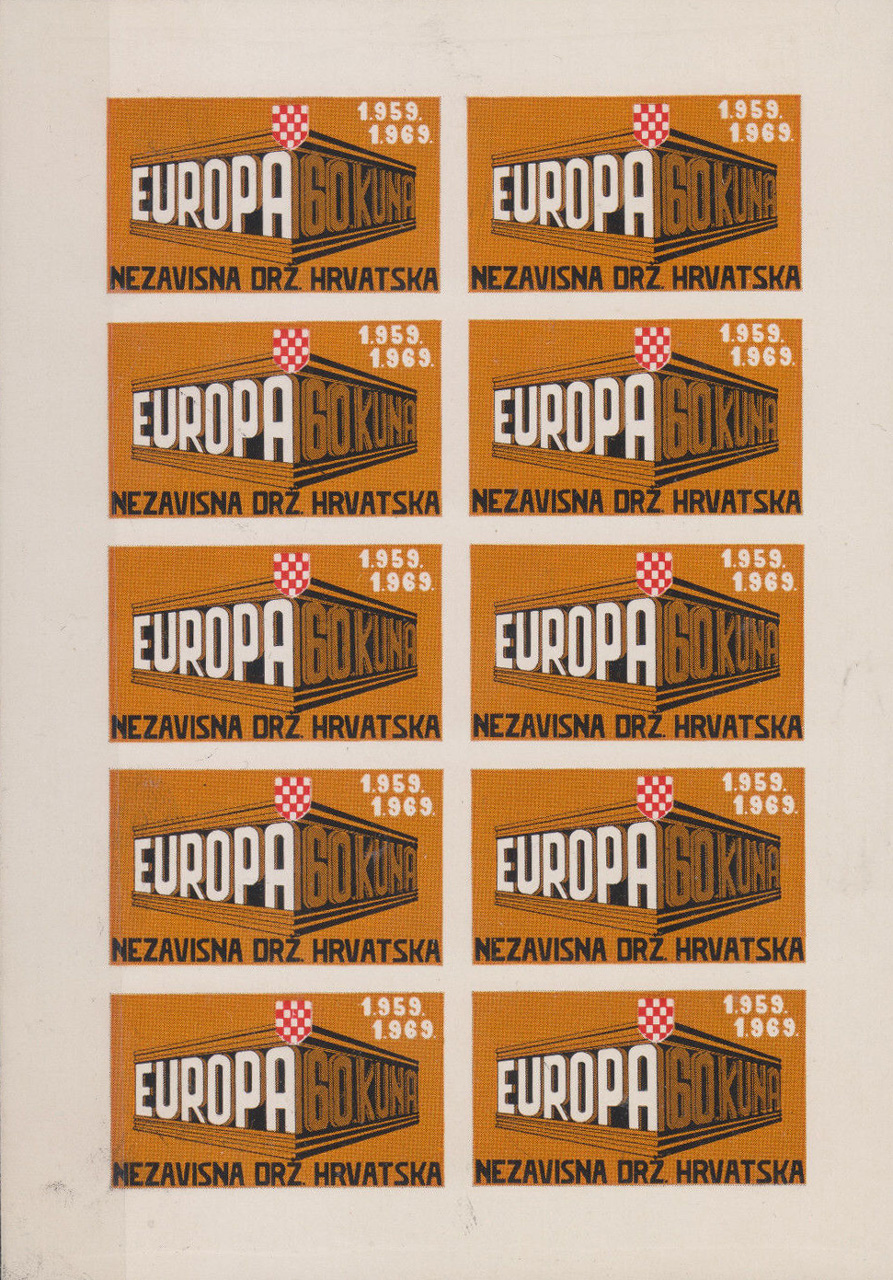
[Below: Perforated, circa 1969]
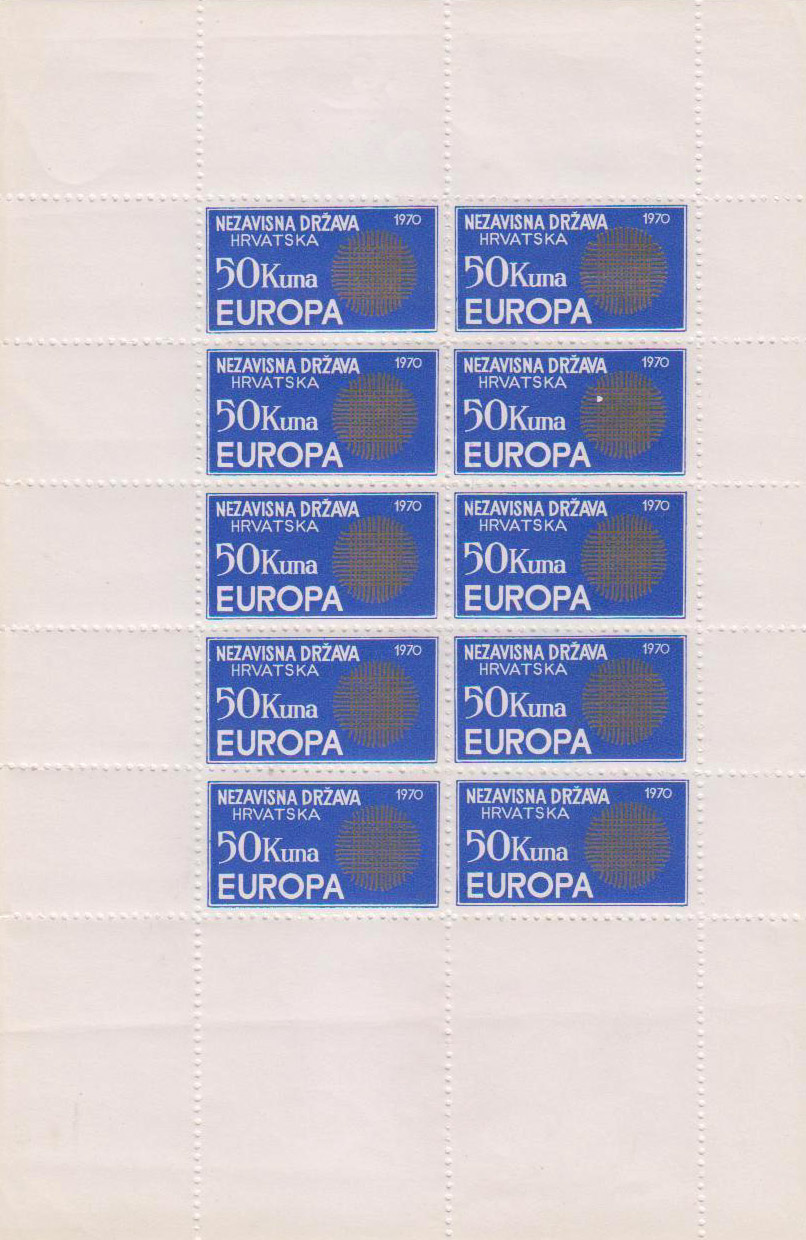
[Below: Perforate variation, circa 1969]
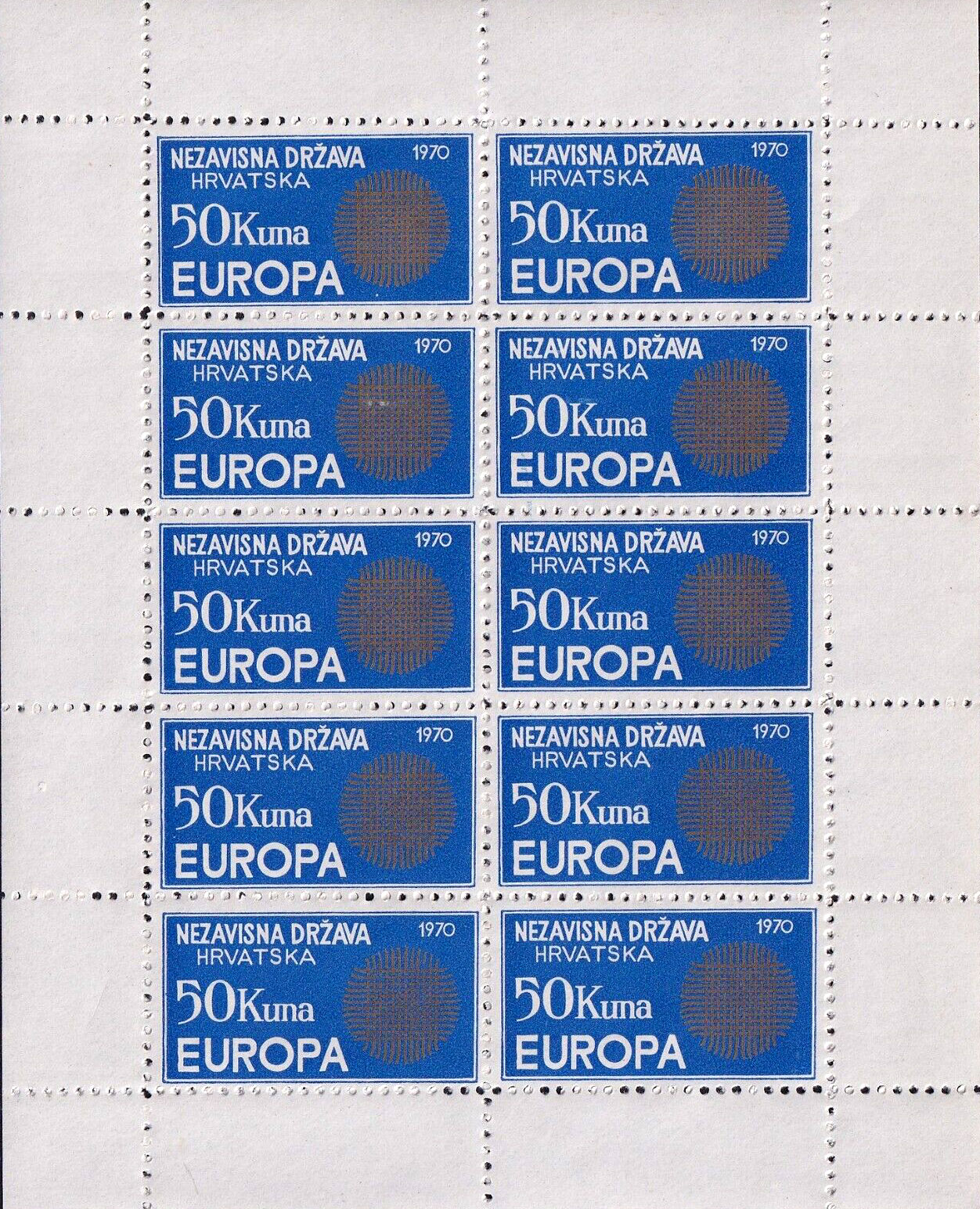
[Below: Used, circa 1969]
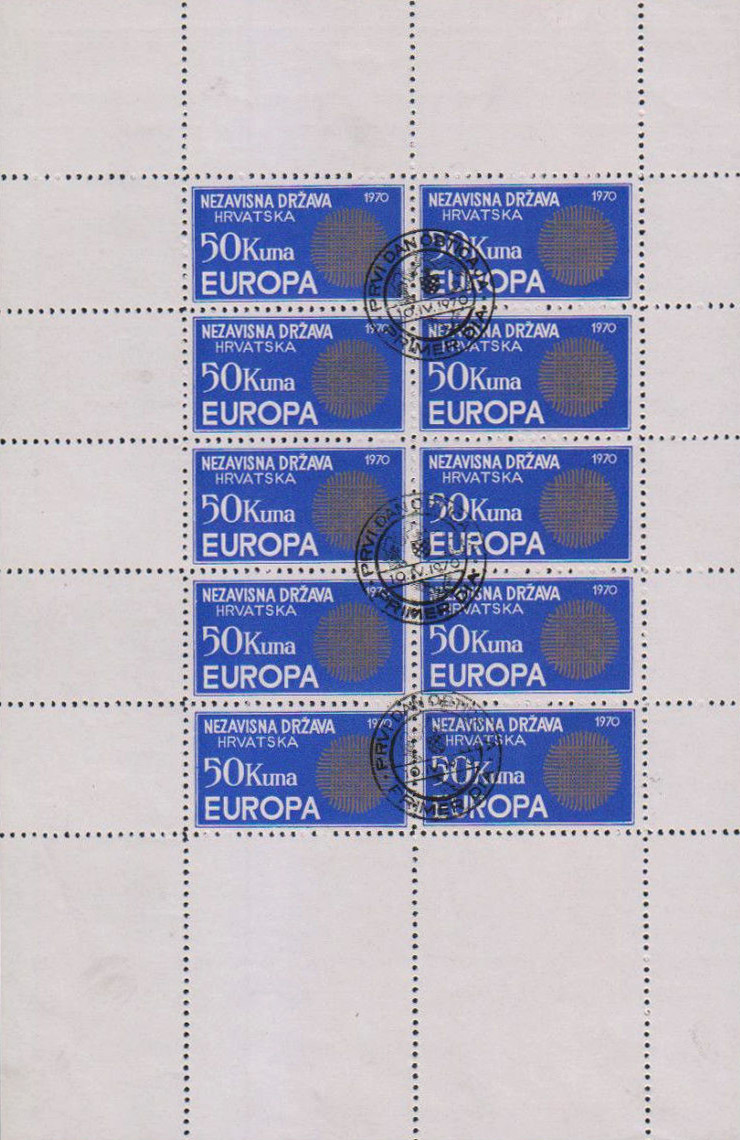
[Below: Imperforate, circa 1969]
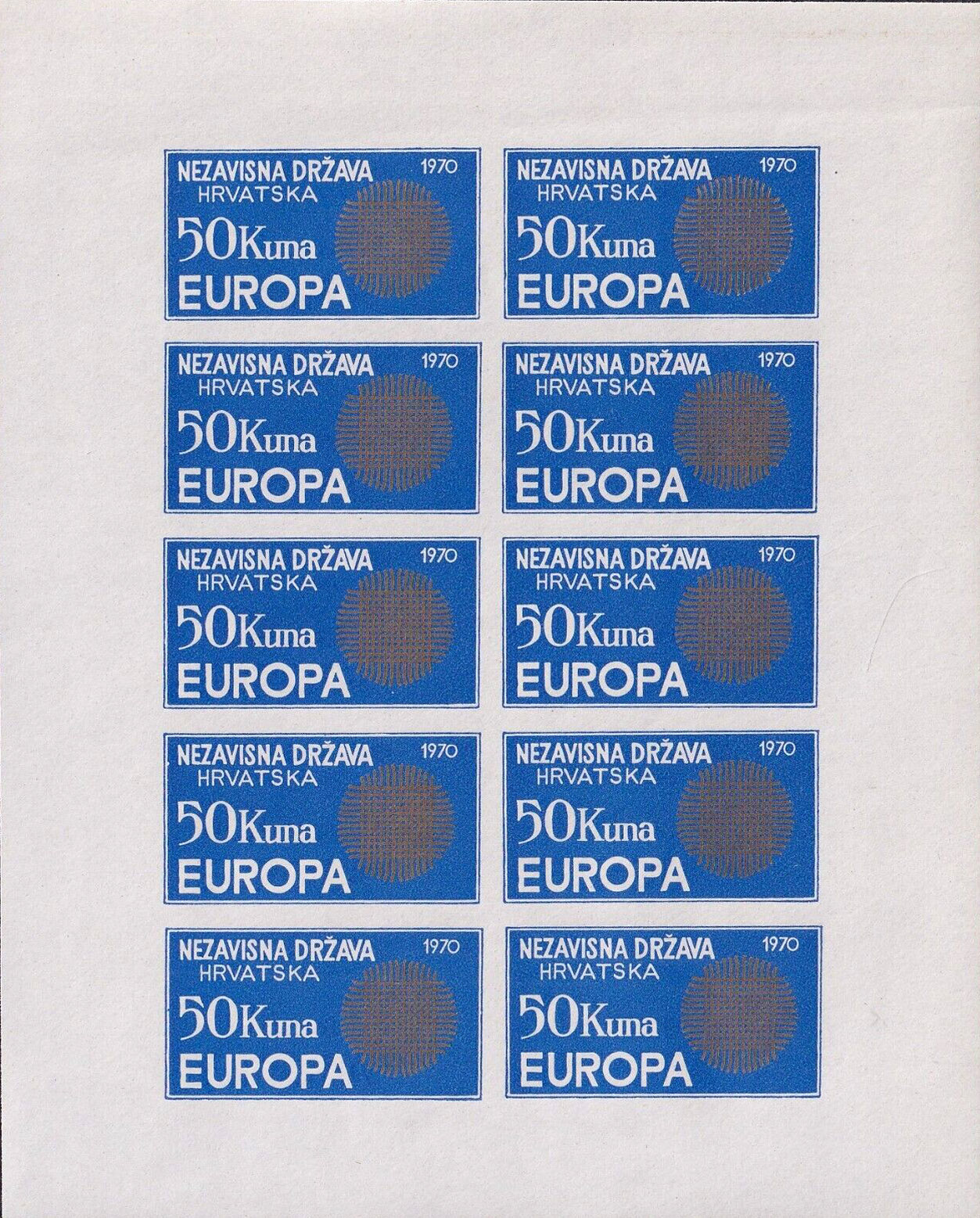
[Below: Imperforate, off-center, circa 1969]
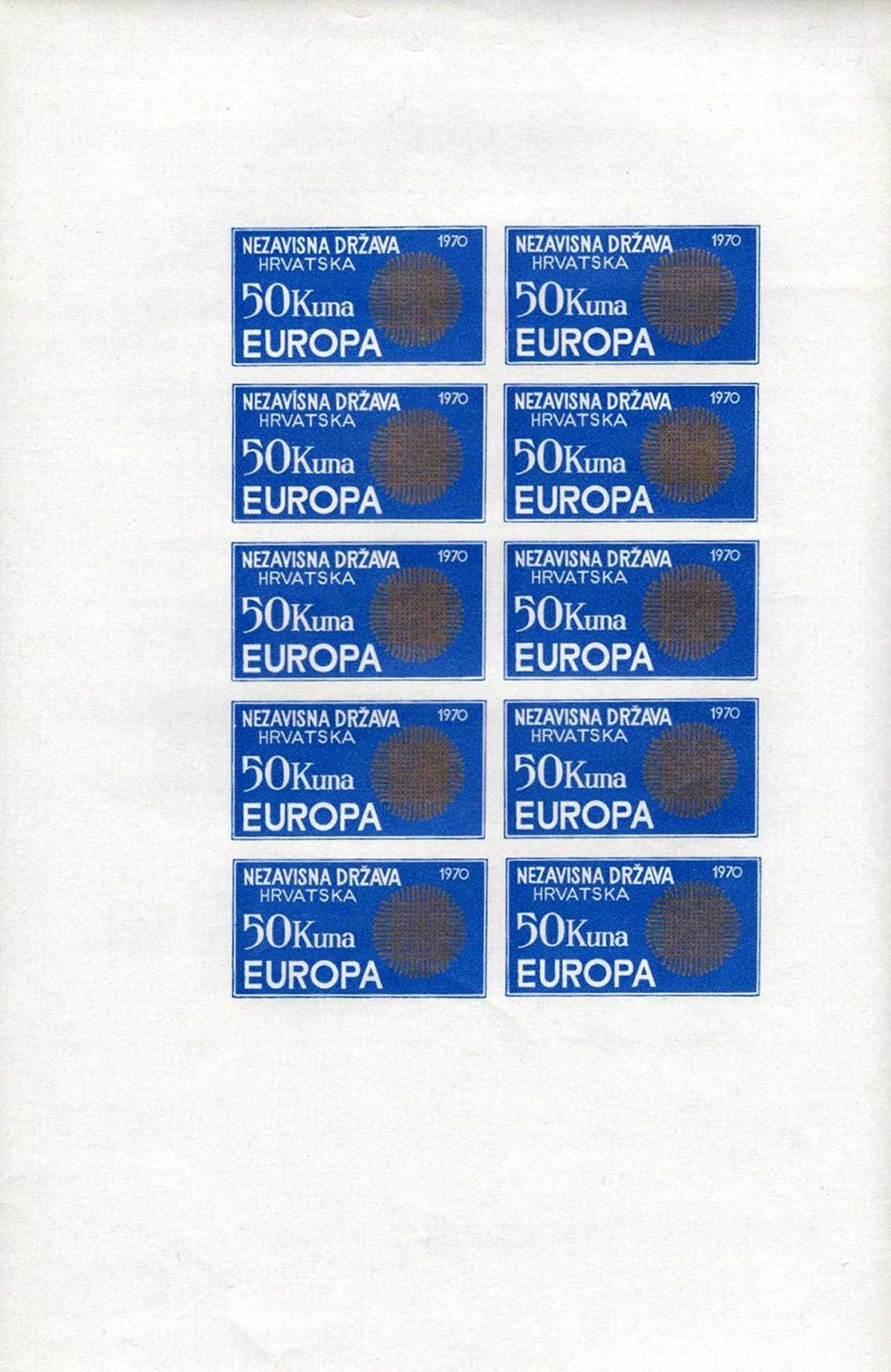
[Below: Perforate, circa 1969]
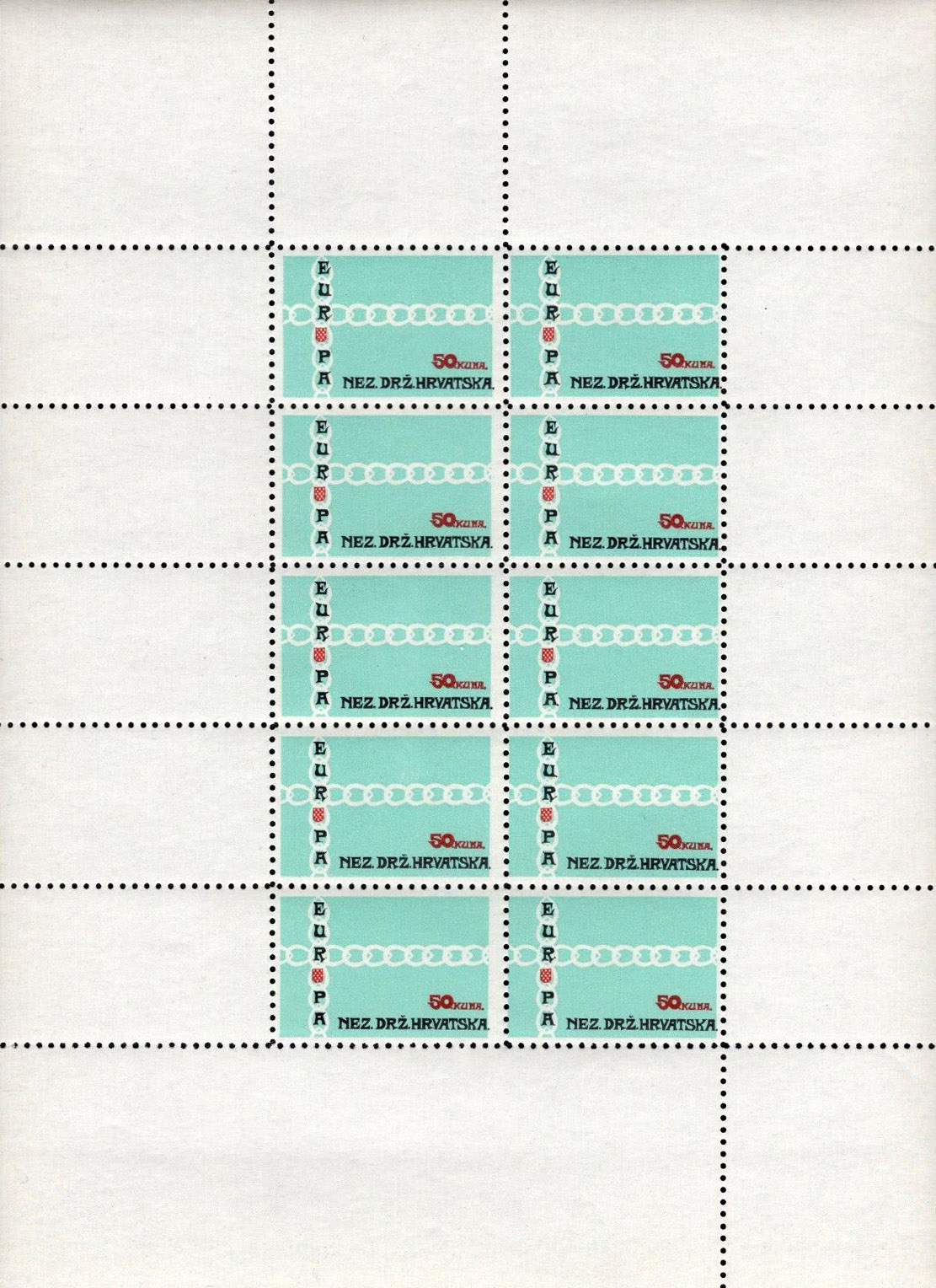
[Below: Canceled, circa 1969]
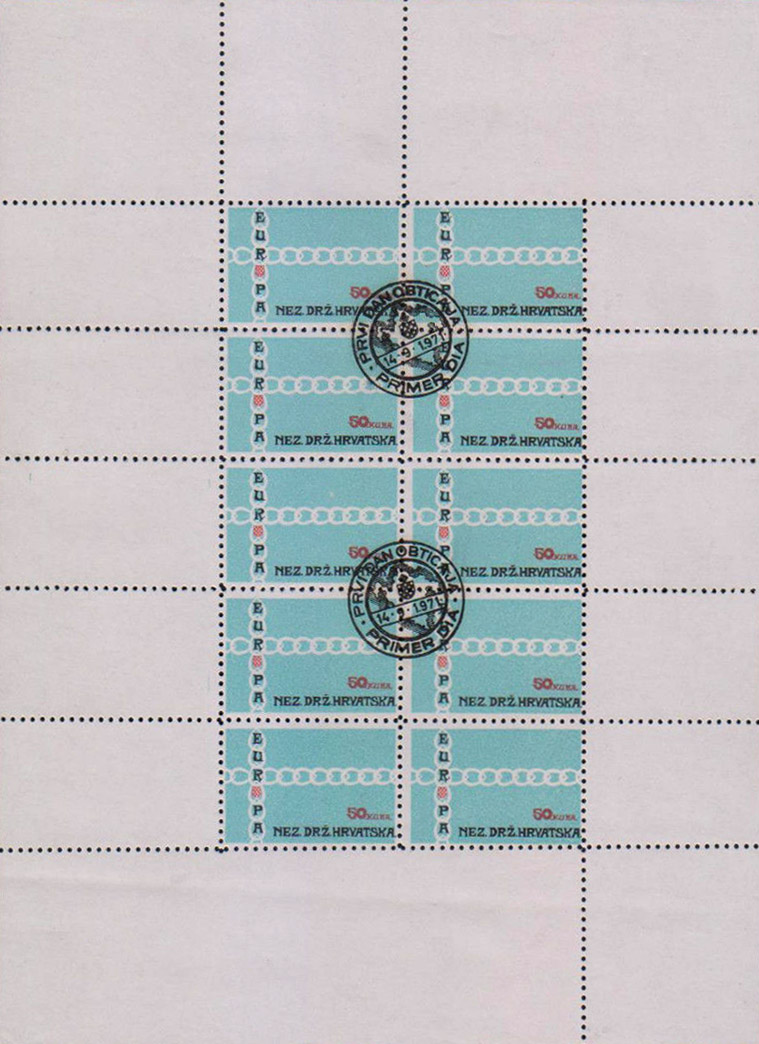
[Below: Unused, circa 1972]
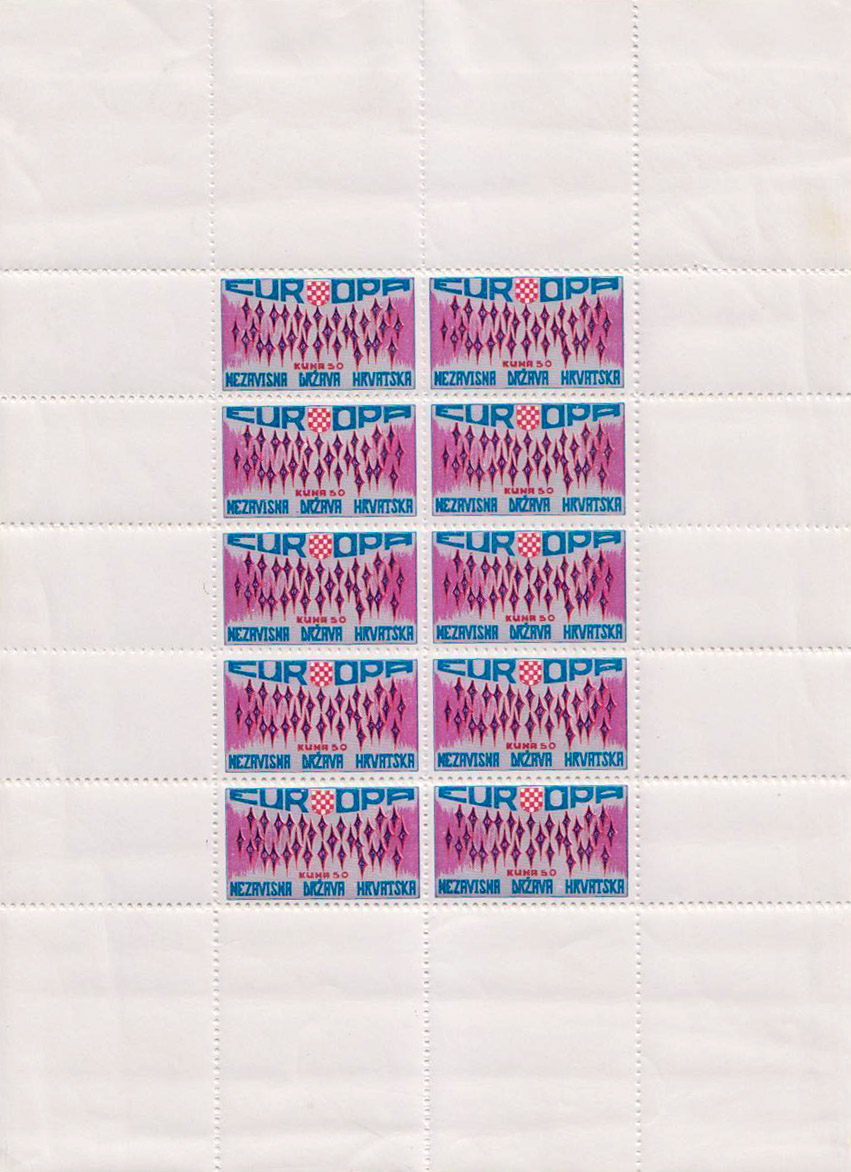
[Below: Used, circa 1972]
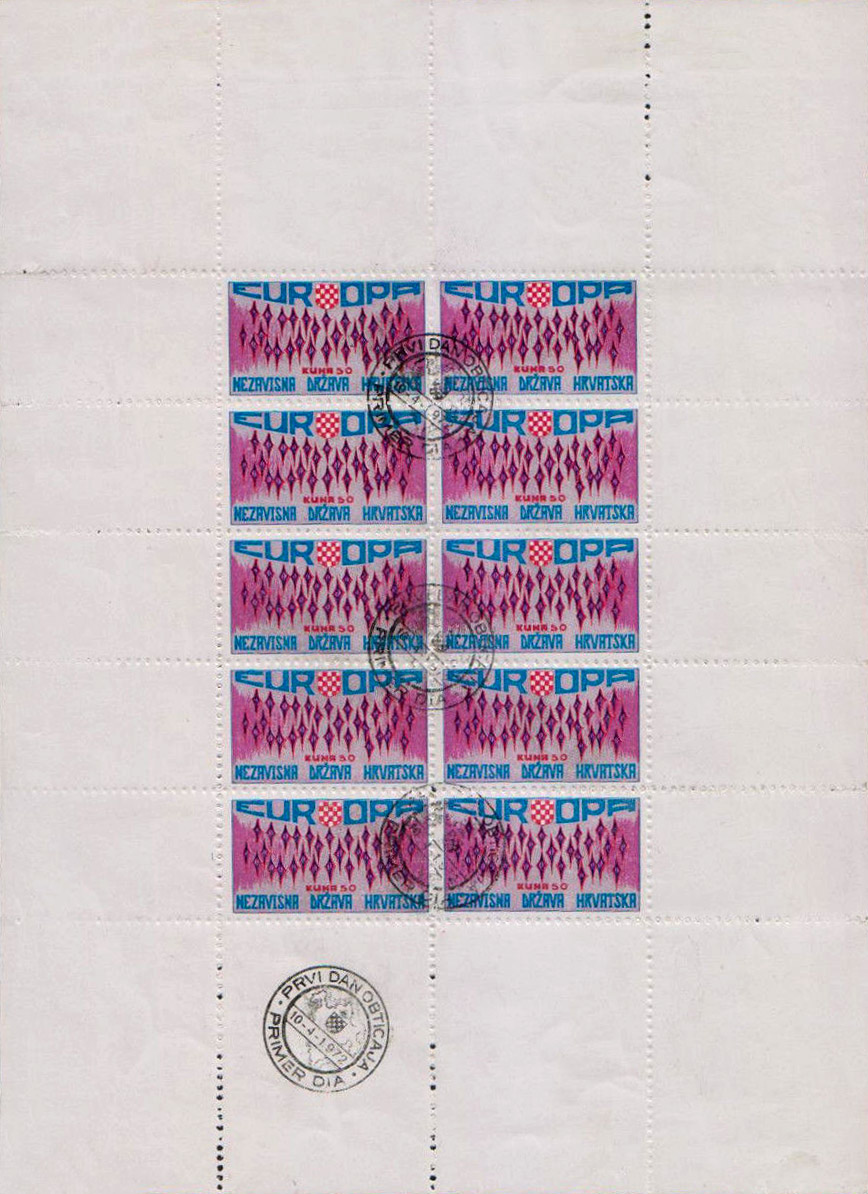
[Below: Much smaller sheet selvage/size. Enlarged to show detail.]
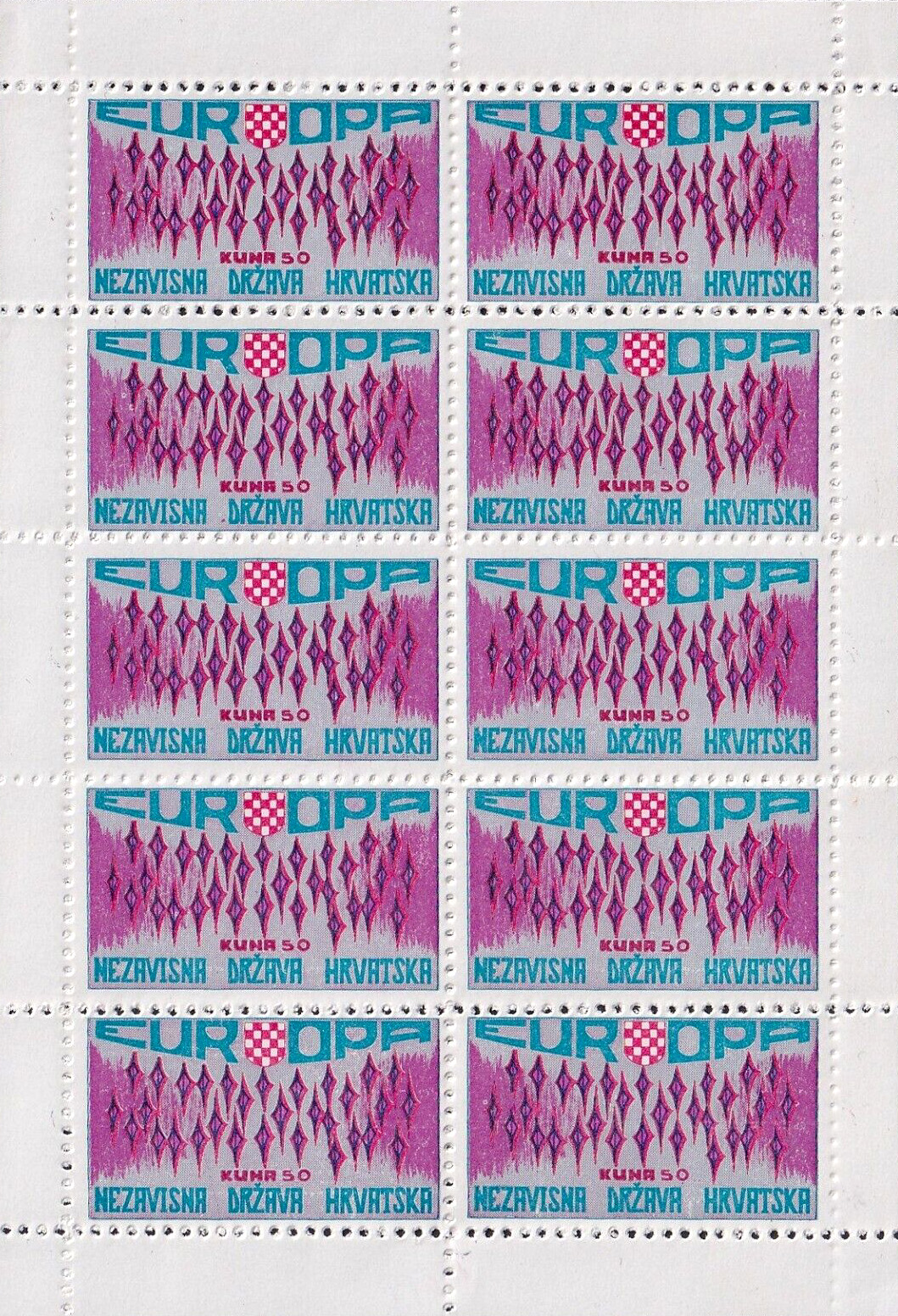
[Below: This is an interesting item - it uses a picture of a WWII Croatian stamp - honoring the fight on the Eastern Front against communism - to help commemorate the 20th anniversary. Circa 1961.]
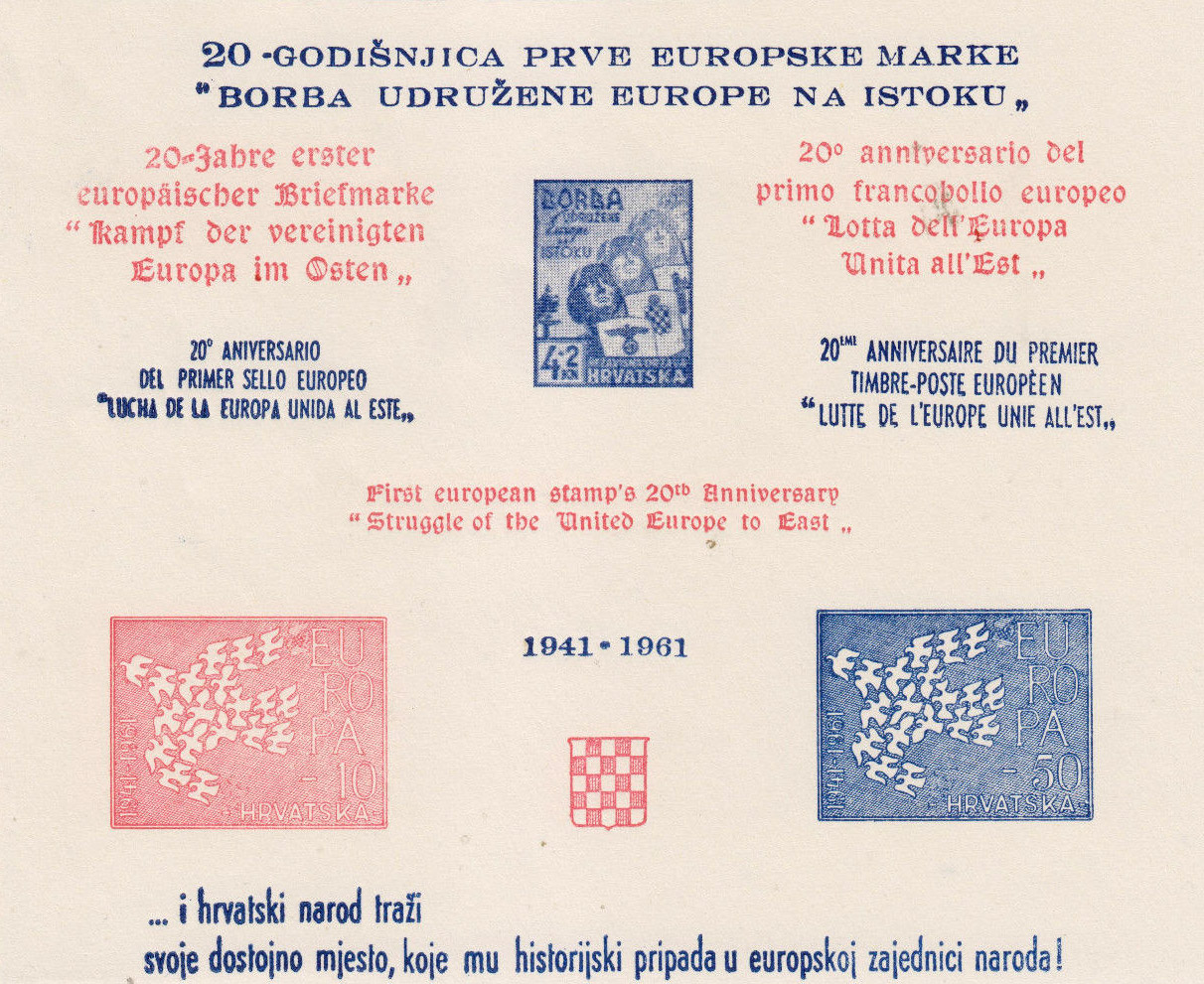
[Below: An uncut sheet of four.]
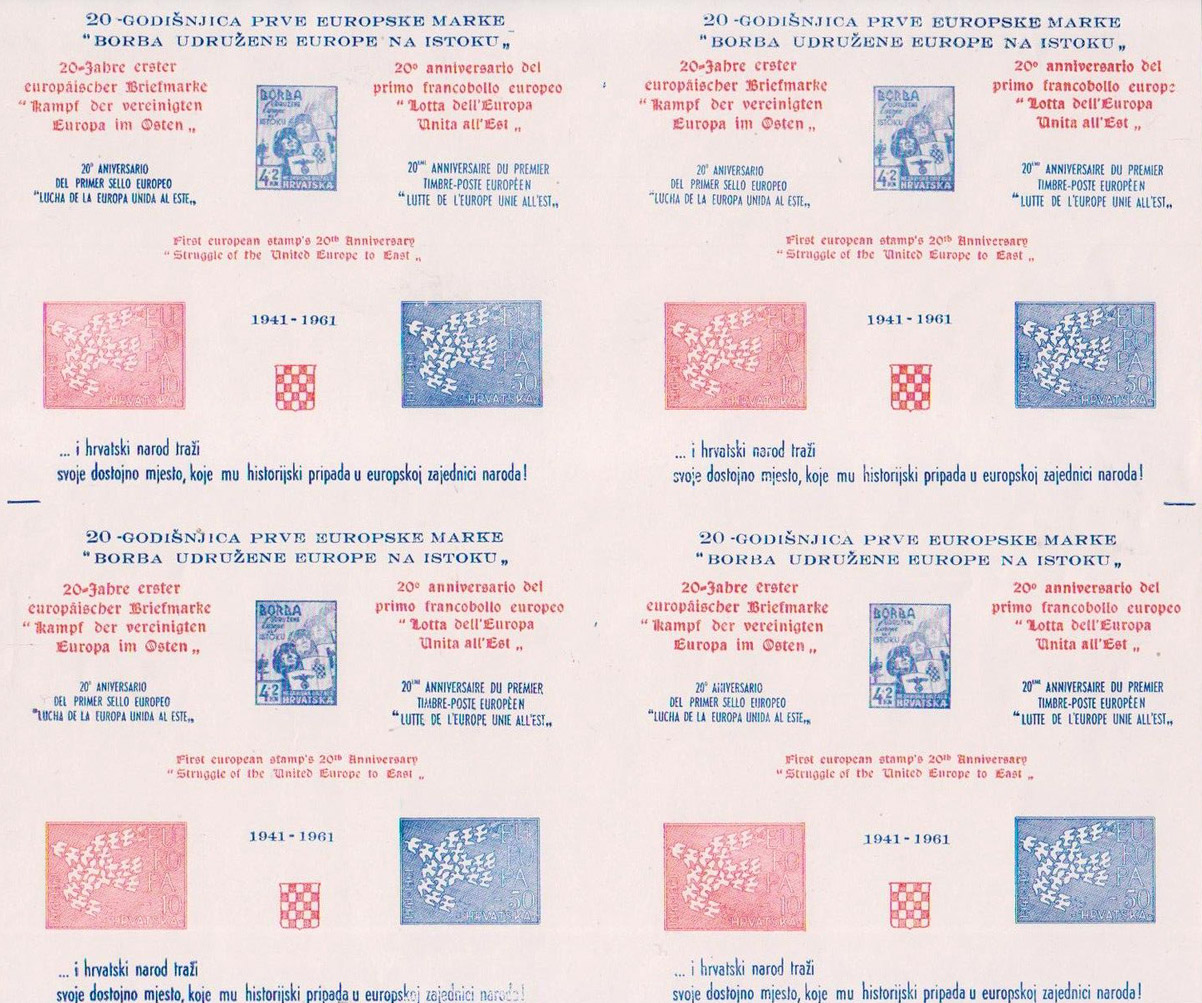
[Below: A proof version.]
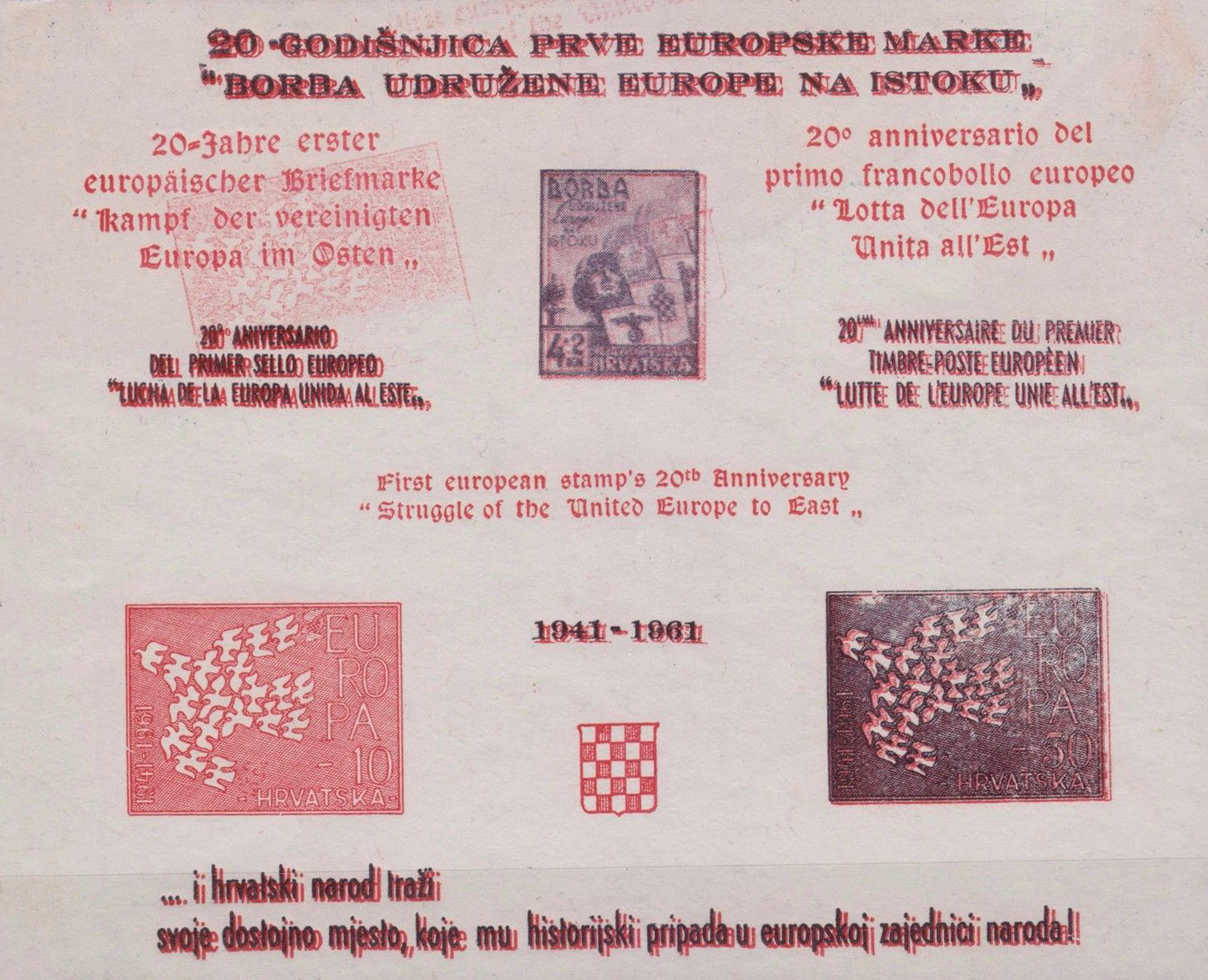
[Below: This was released in the mid 1960s by the Croatian Relief Society, Inc. of New York City.]
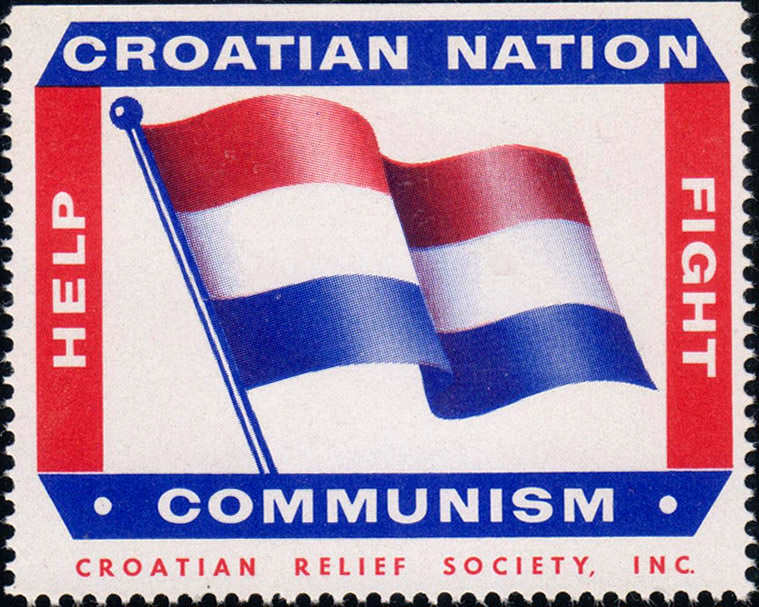
[Below: Another stamp to draw interest to the Bleiburg massacre.]
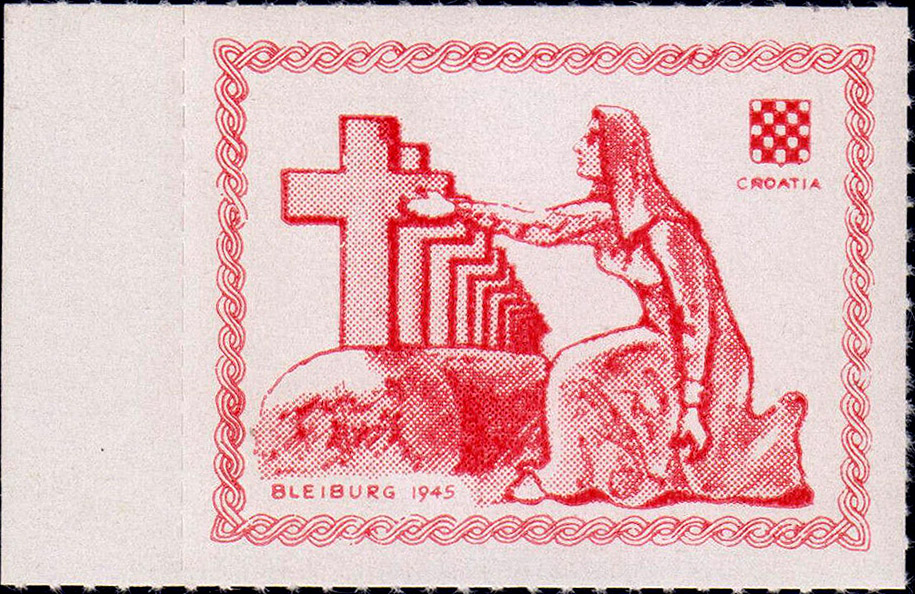
[Below: Released in Canada in the 1950s and 1960s showing Cardinal Stepinac. This was done by the Croatian Franciscan Fathers T.O.R. Rev. Boniface Soric, T.O.R. - 705 Shaw Avenue, McKeesport, Pa., USA. Proceeds went to Croatian parishes and clergy.]
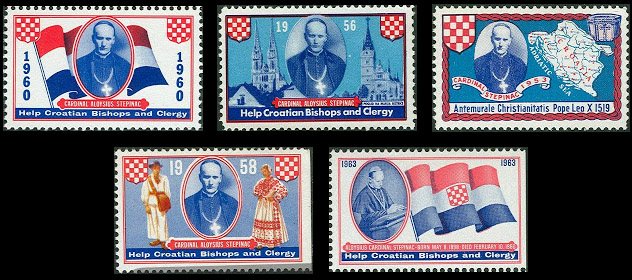
[Below: Sheetlet from 1980 from Australia.]
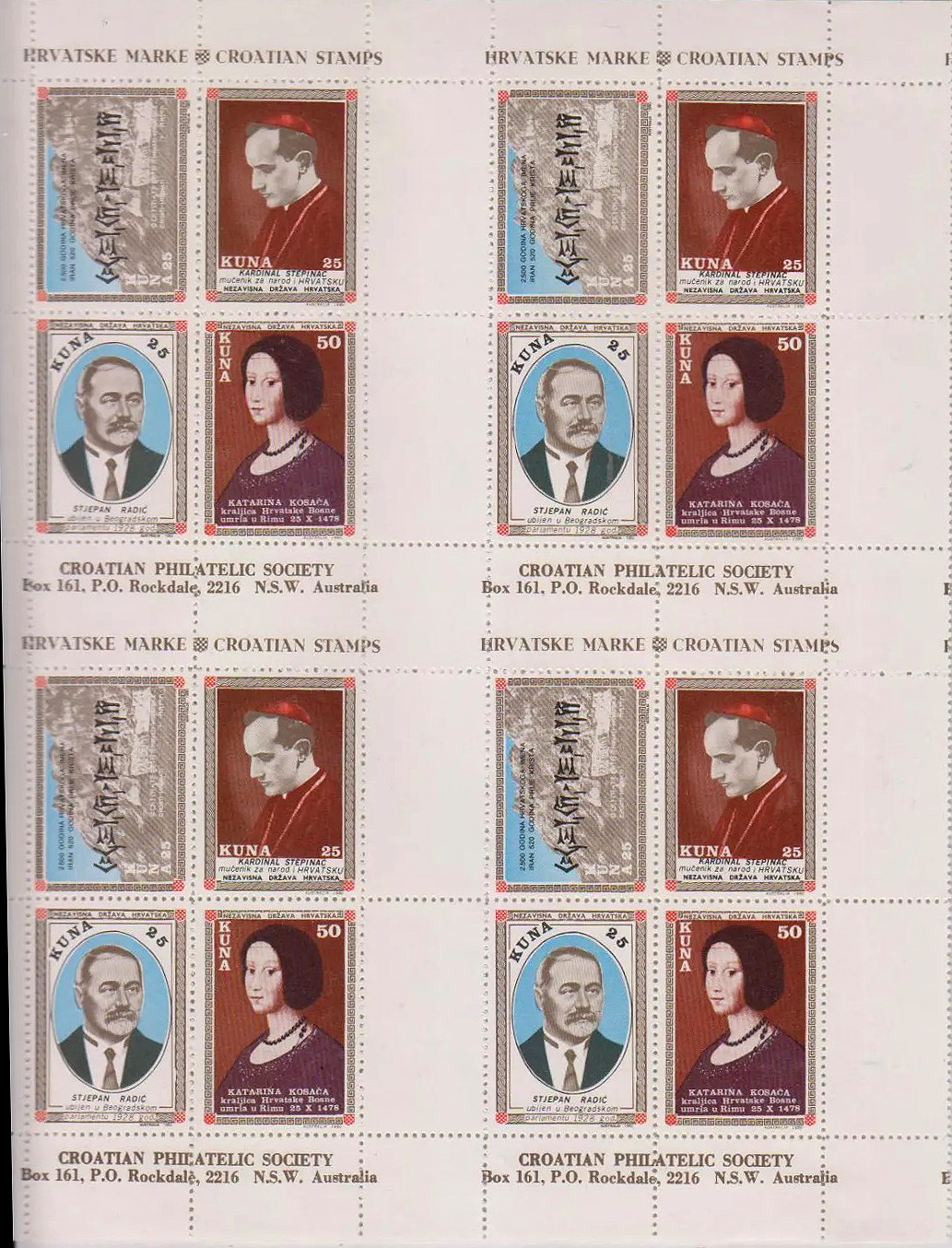
[Below: Circa 1995.]
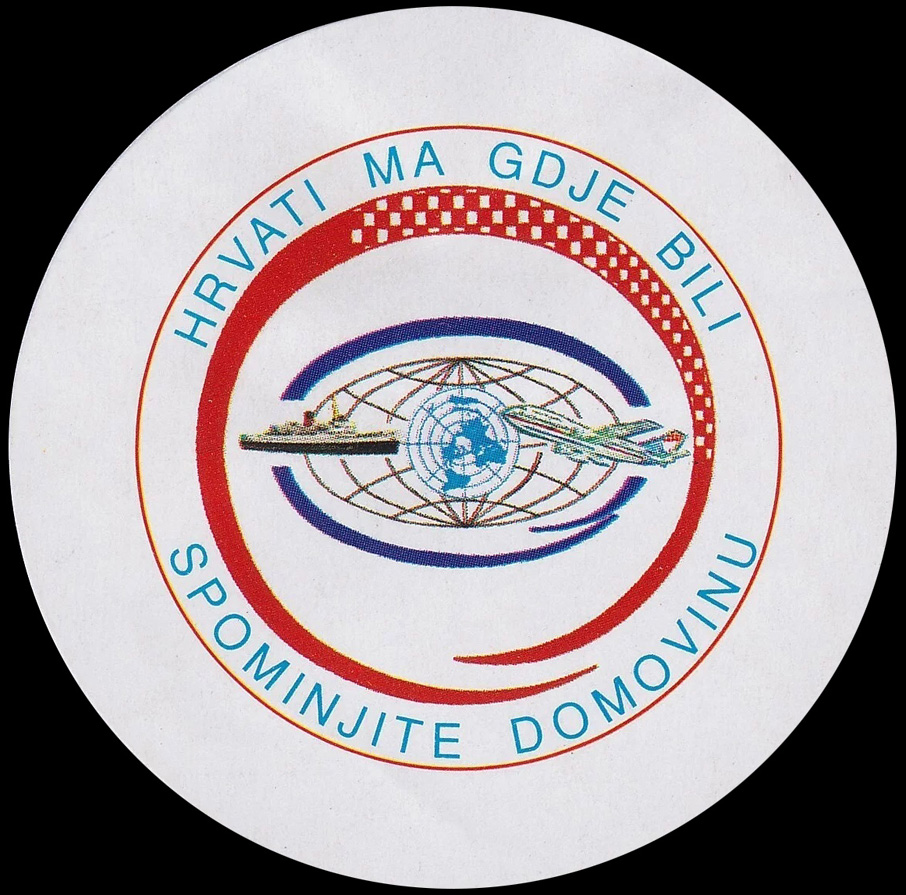
[Below: Bleiburg massacre 50th anniversary.] .]
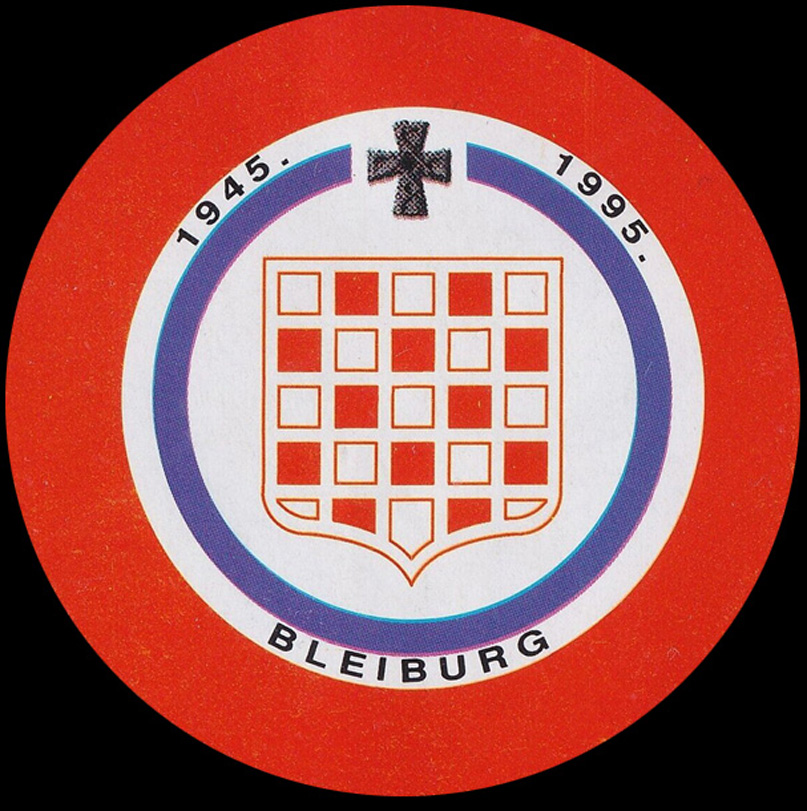
[Below: Released in Australia, circa 1979.]
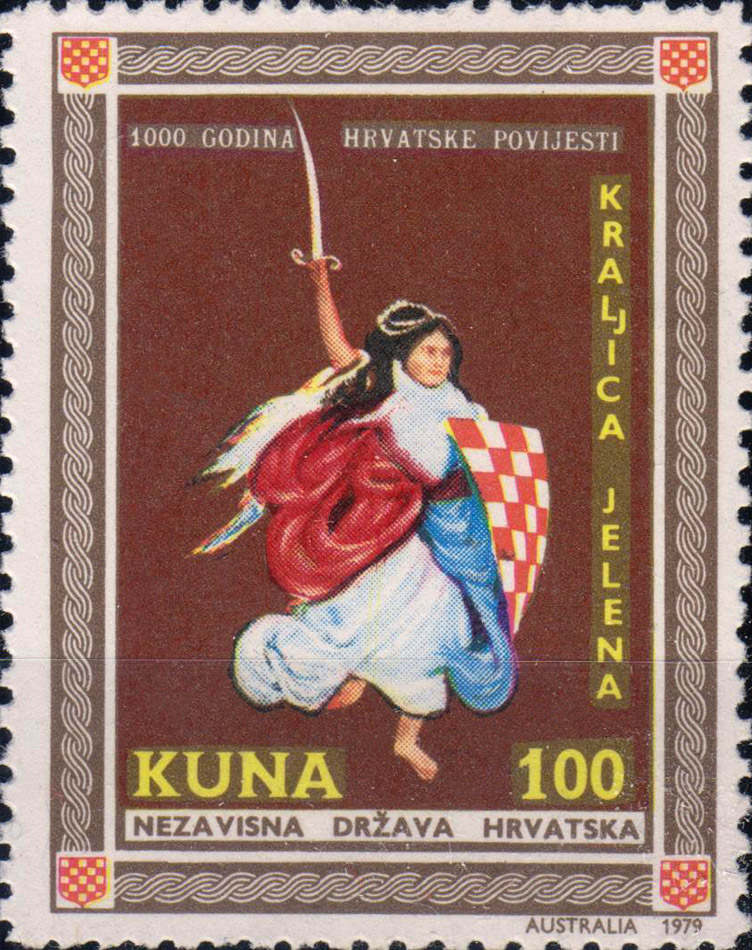
[Below: Various coins were also privately released over the years honoring Dr. Pavelic.]
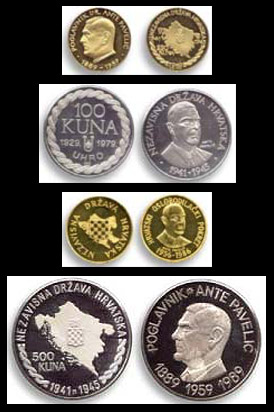
[Below: 1991 would see the release of these private issues from Croatia during its time of conflict. They show the crest of Croatia over overprinted Yugoslavian stamps.]
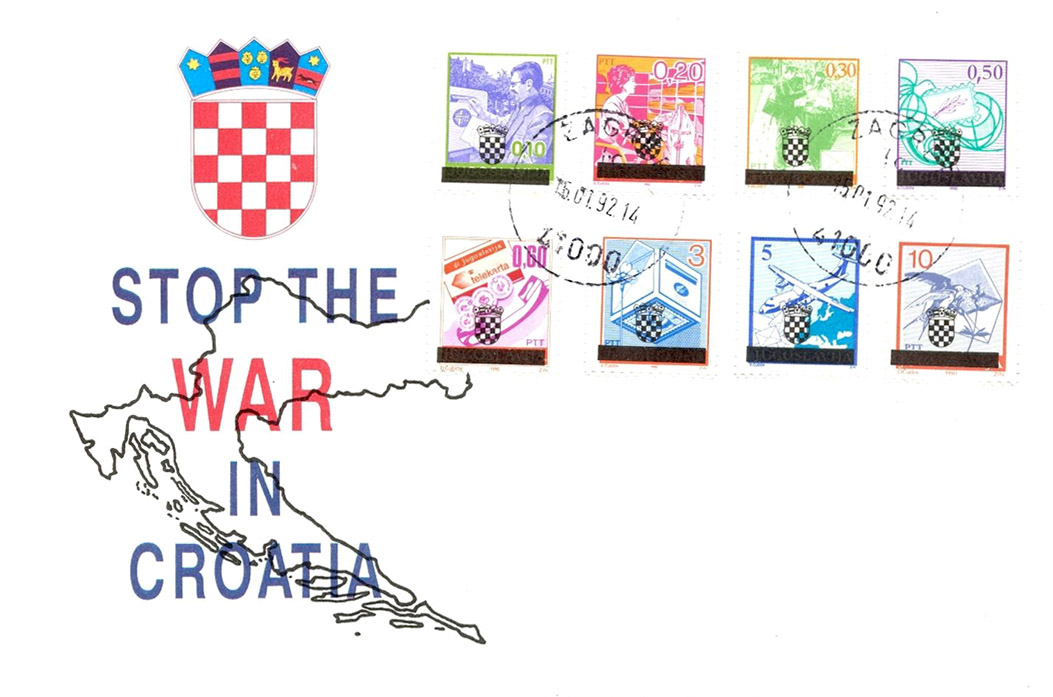
[Below: Also of interest, stamps like these were issued outside of Yugoslavia to protest communism, honor a fallen martyr and draw up support for resistance causes.]
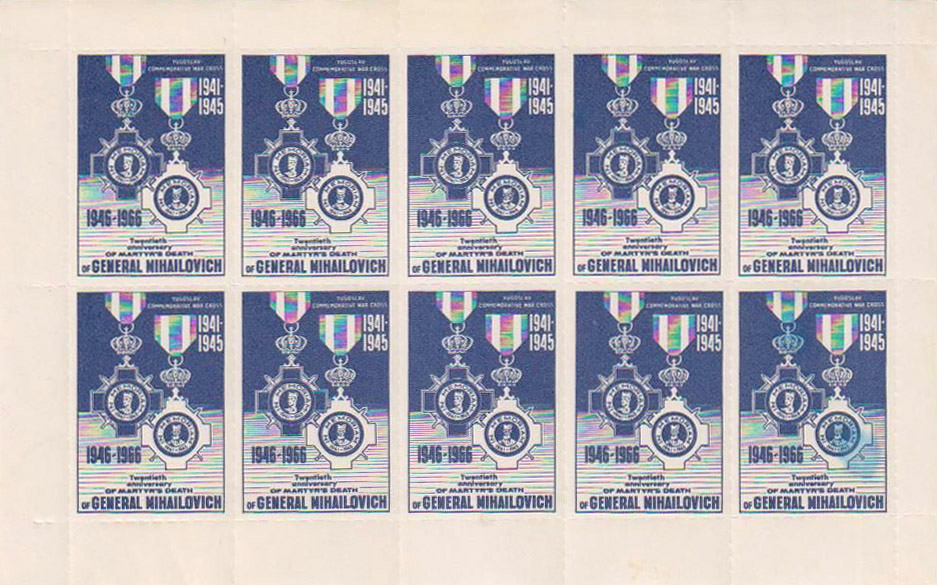
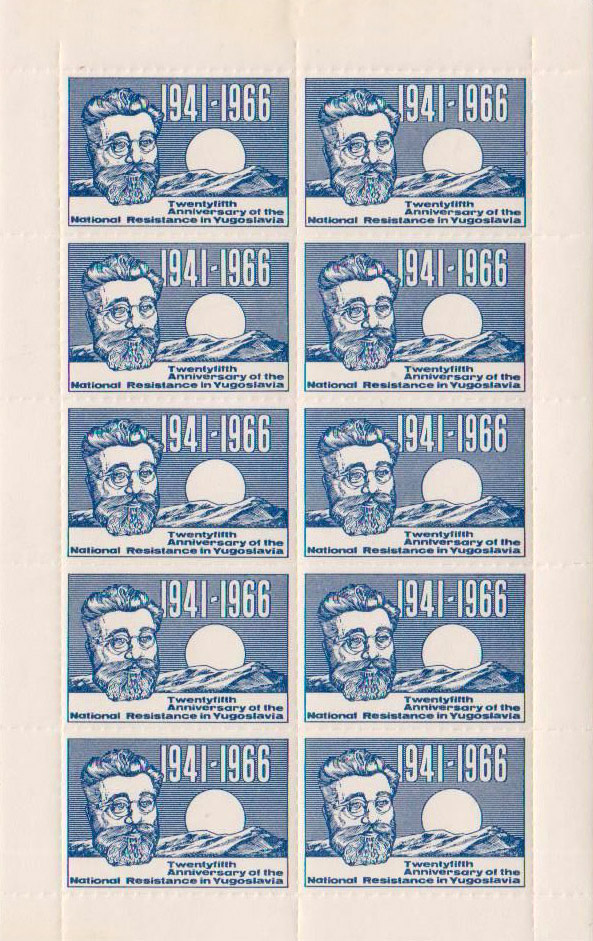
[Below: The stamps above & below honor Dragoljub 'Draža' Mihailovic (April 27, 1893 – July 17, 1946), a Yugoslav Serb general during World War II who often fought along side Axis forces. He was murdered by communists after the war. The picture below is circa 1943.]
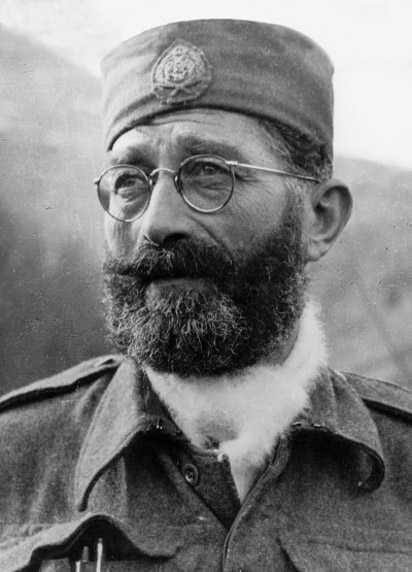
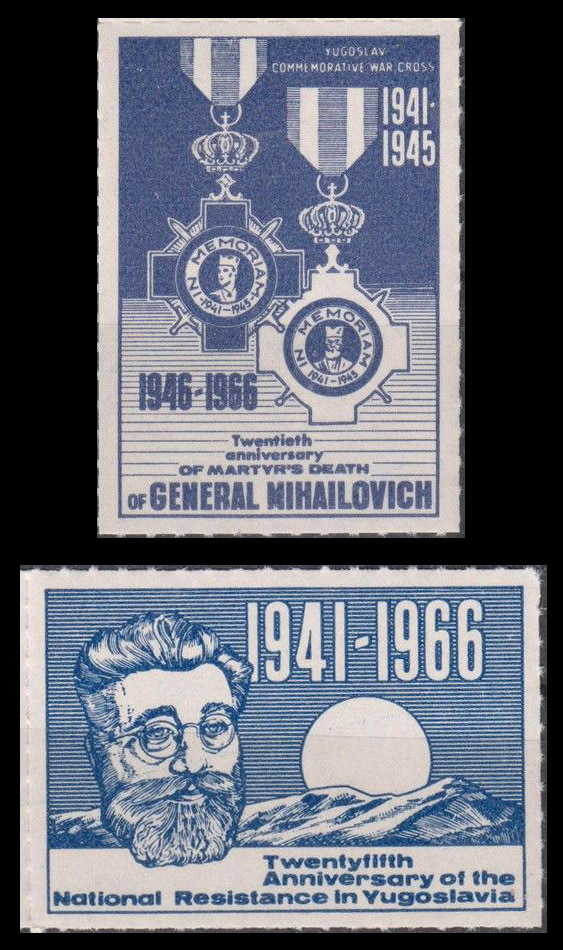
[Below: These stamps were released by the 'American Hungary Federation'.]
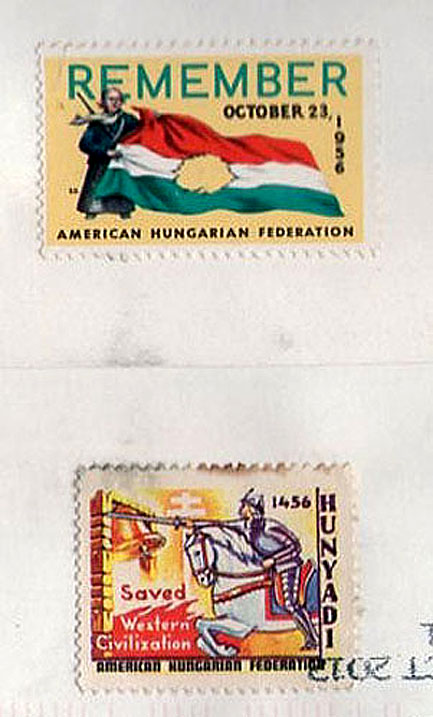
[Below: These stamps were released for Lithuania.]
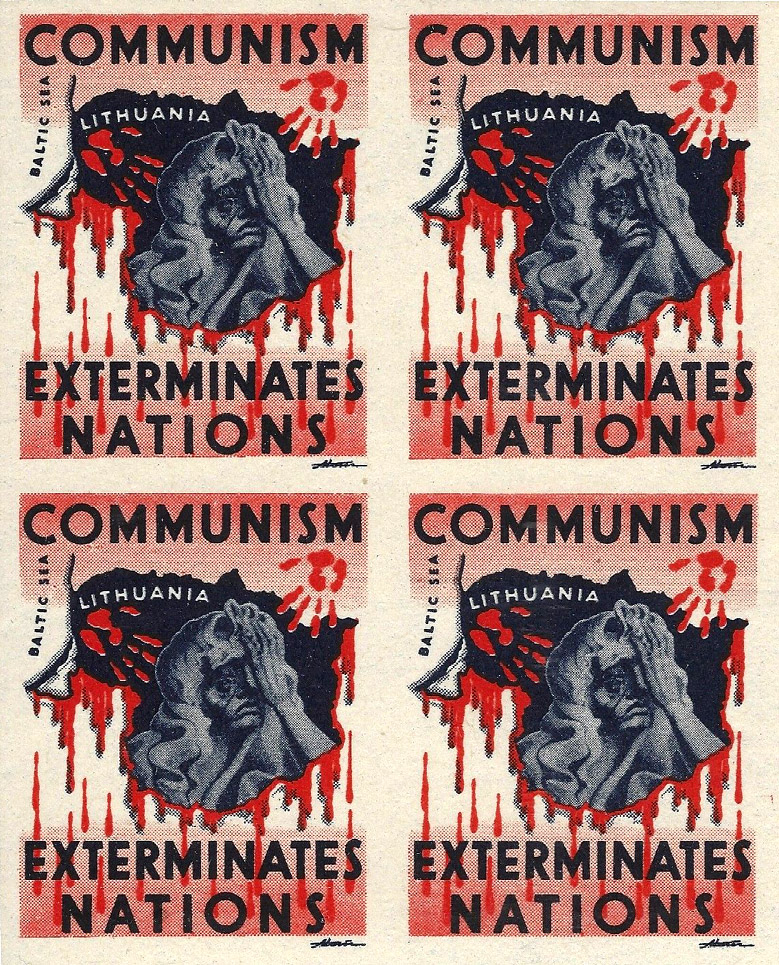
[Below: Close-up.]
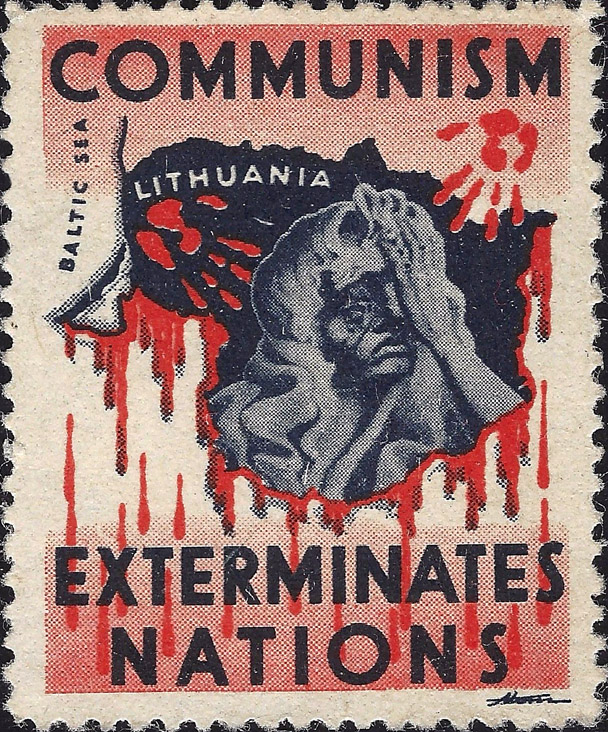
[Below: Excellent guide to Croatian government-in-exile postage, in German]
